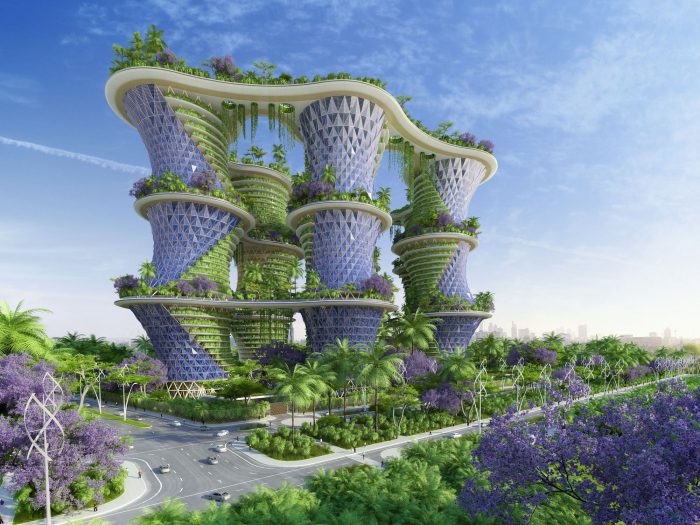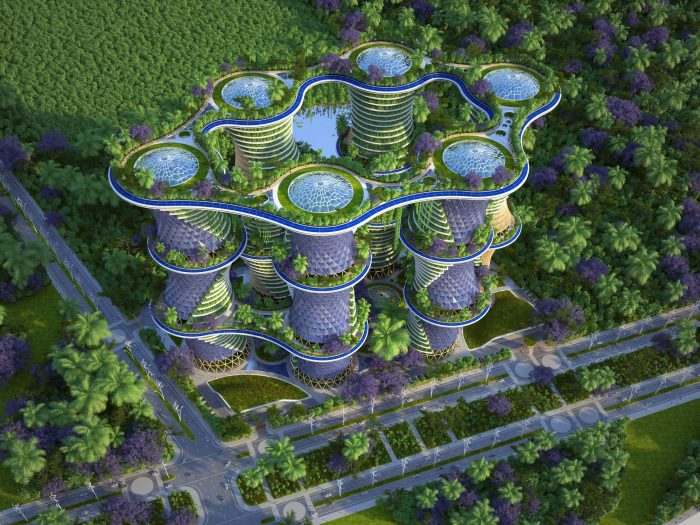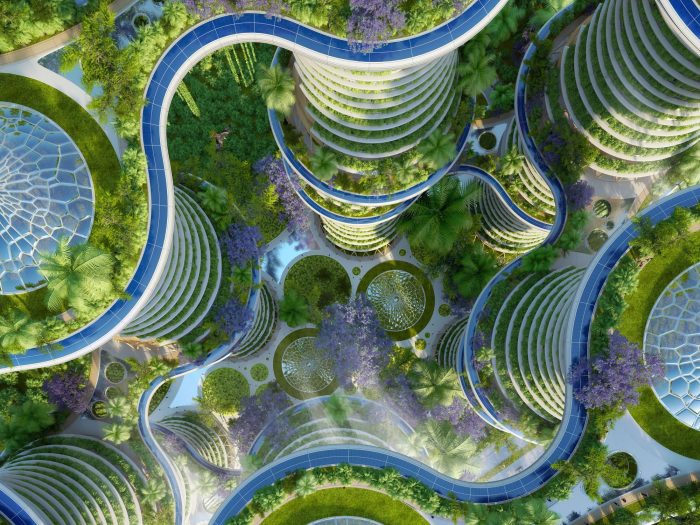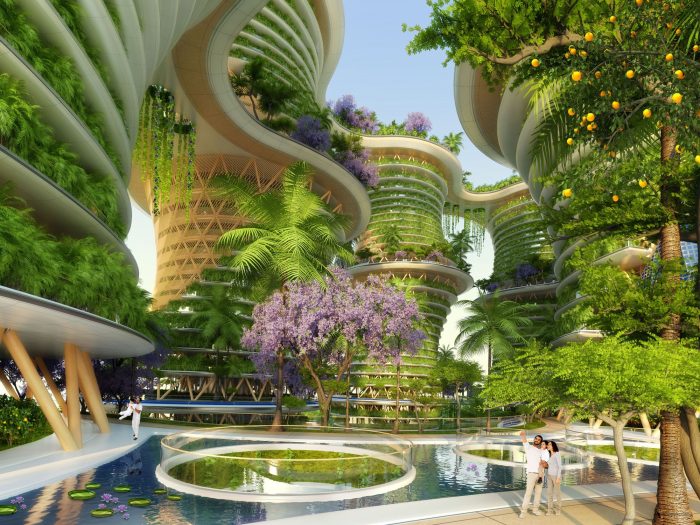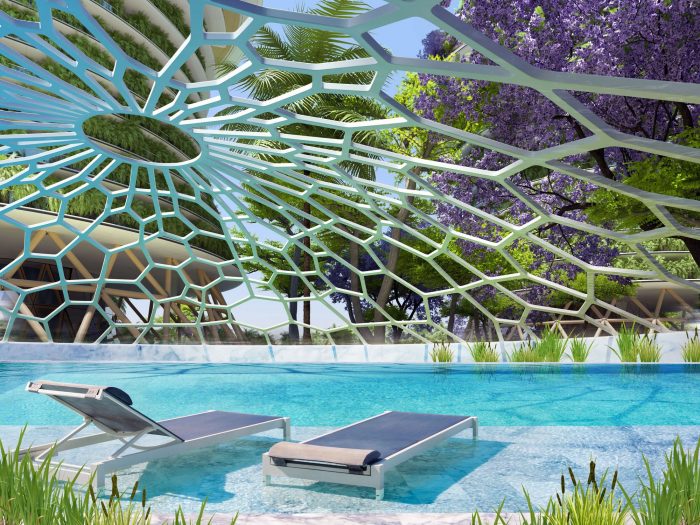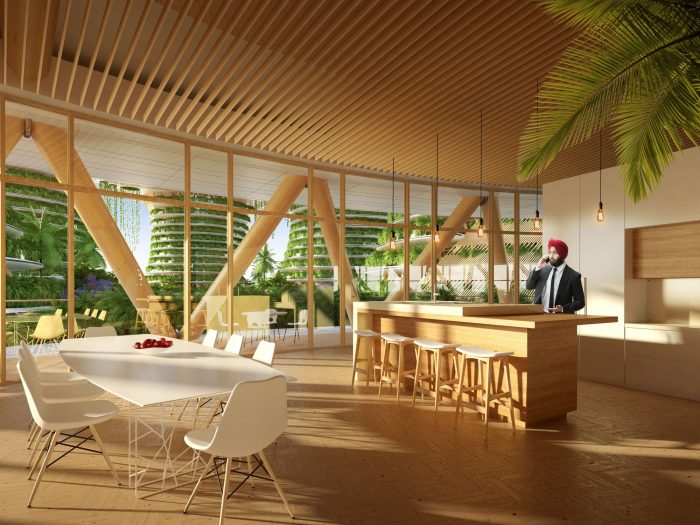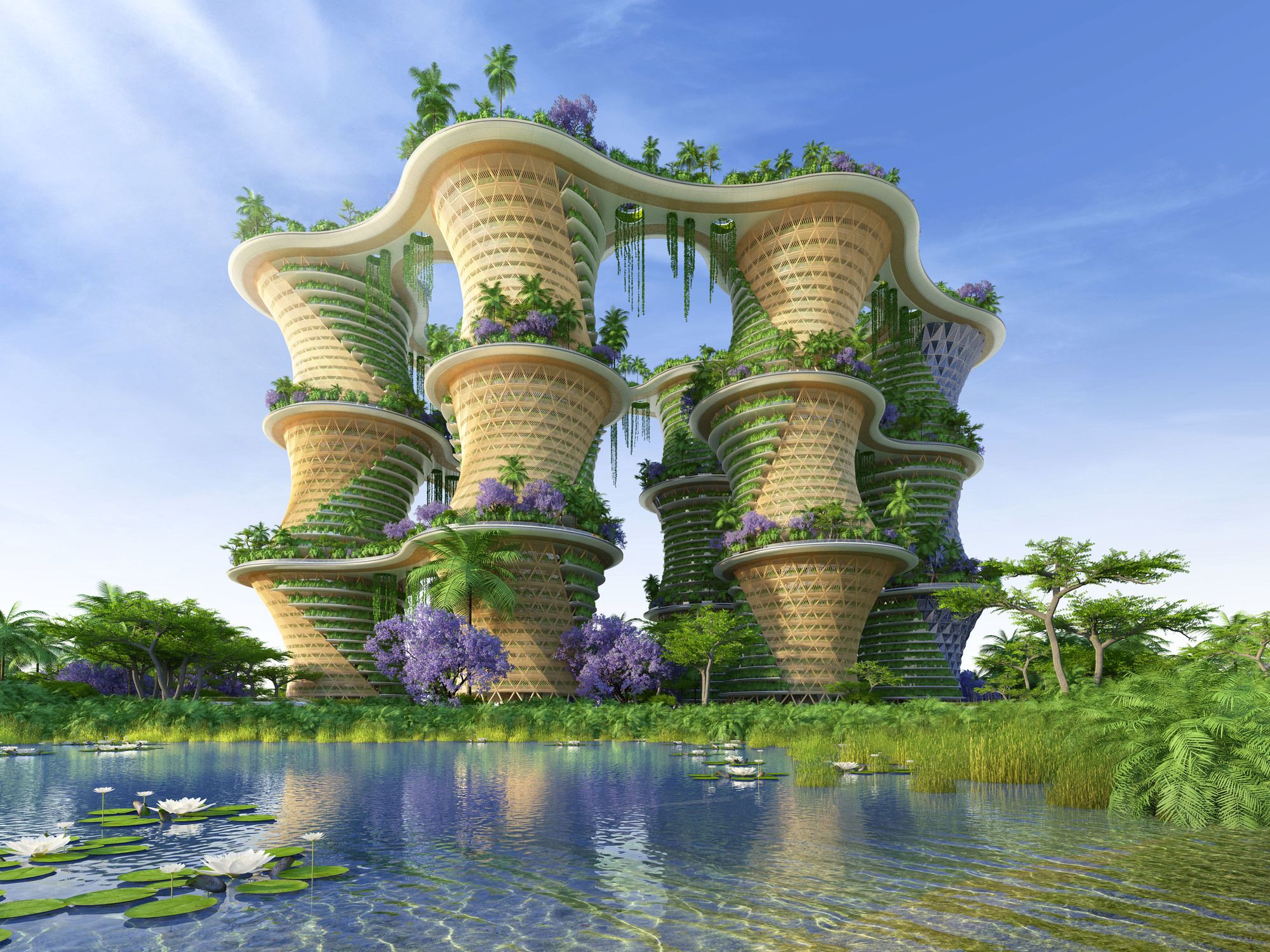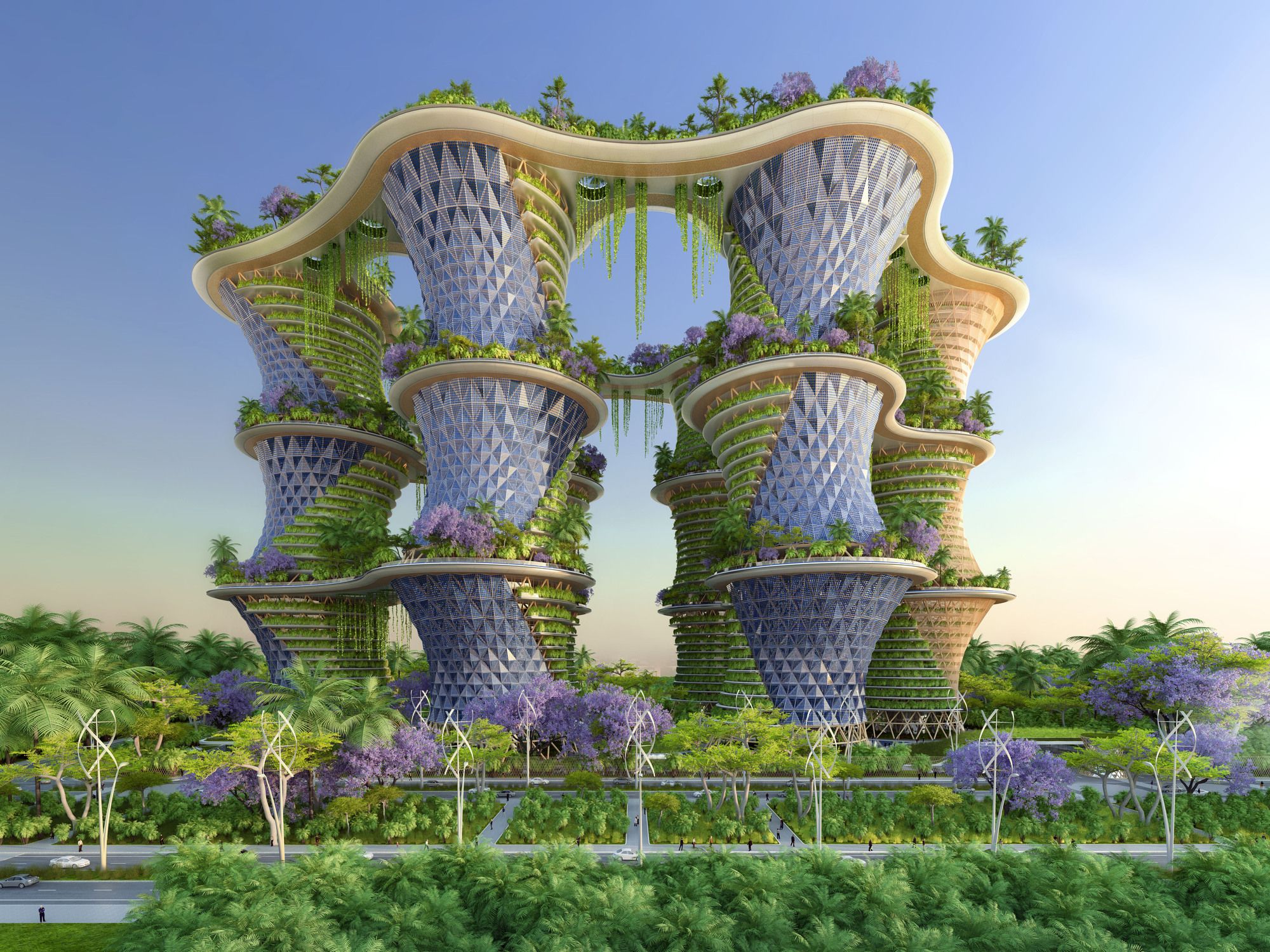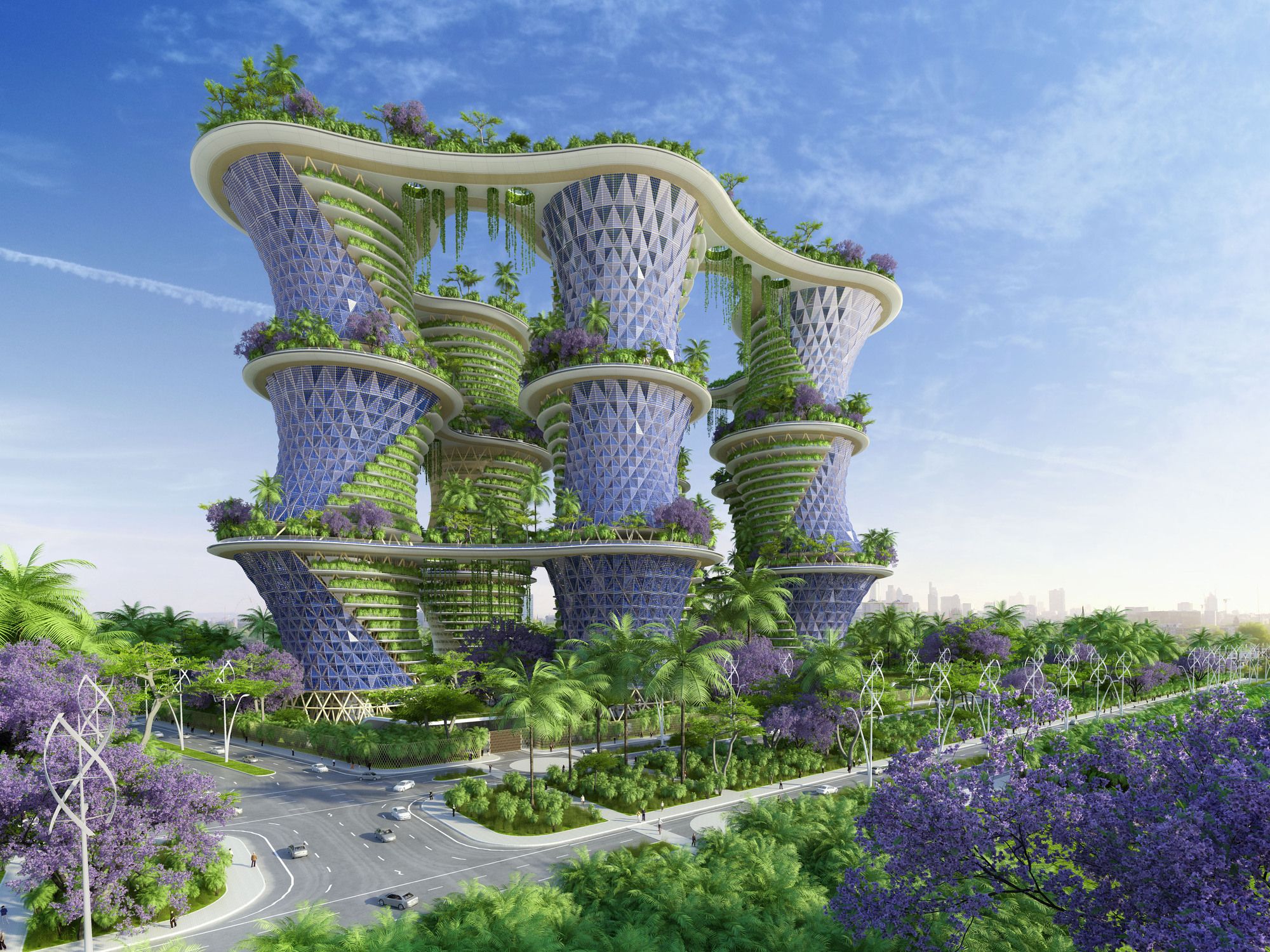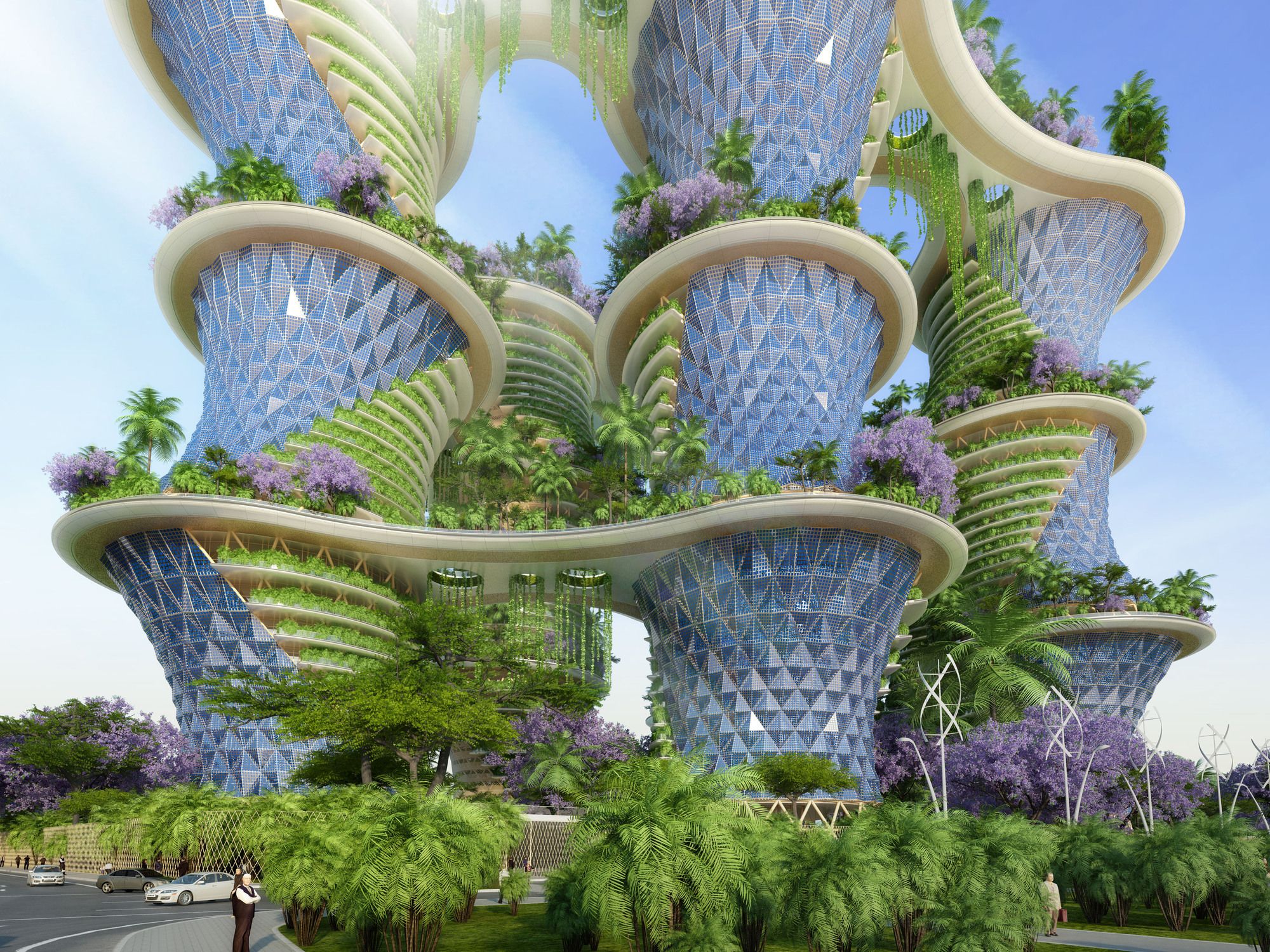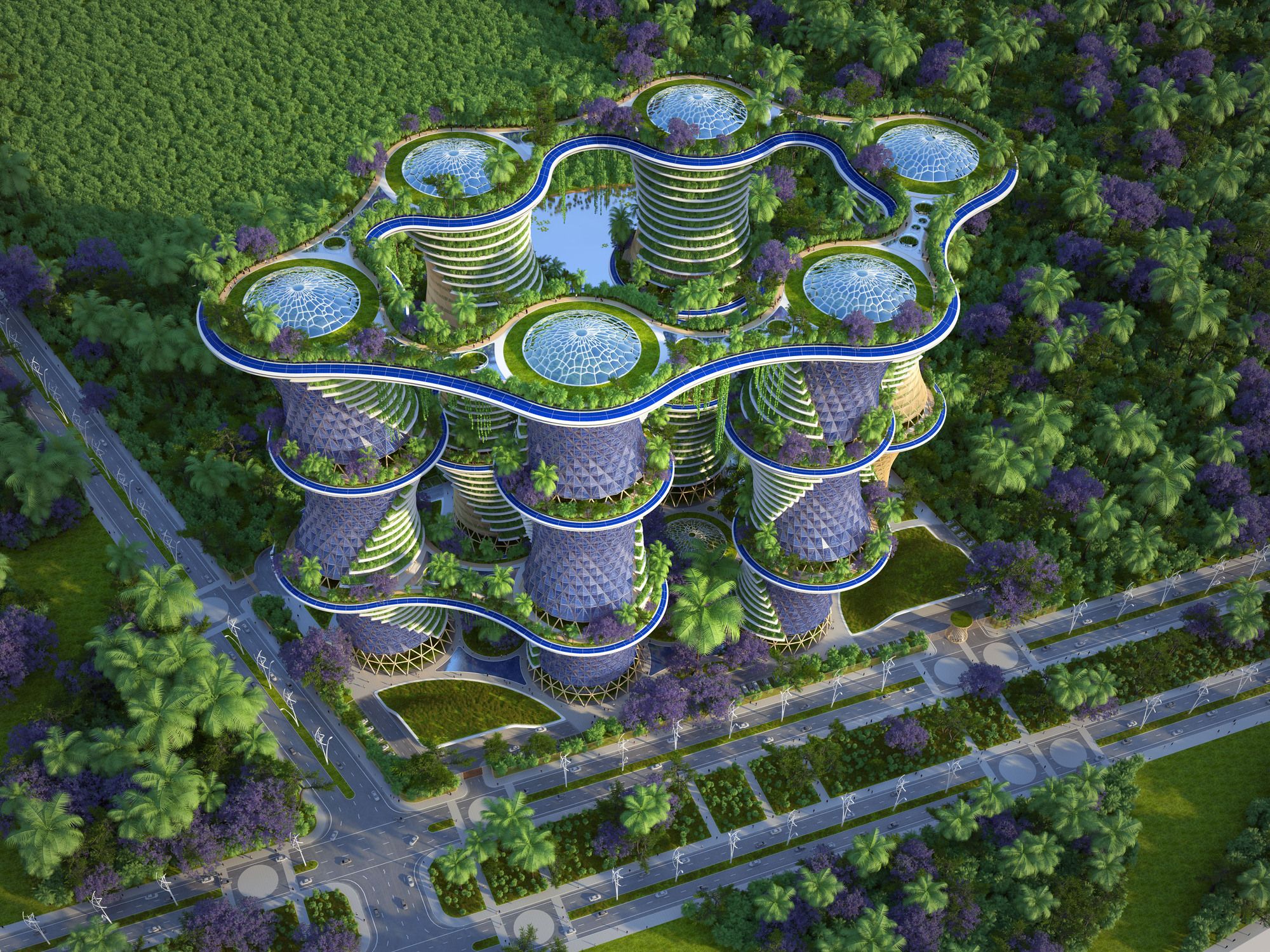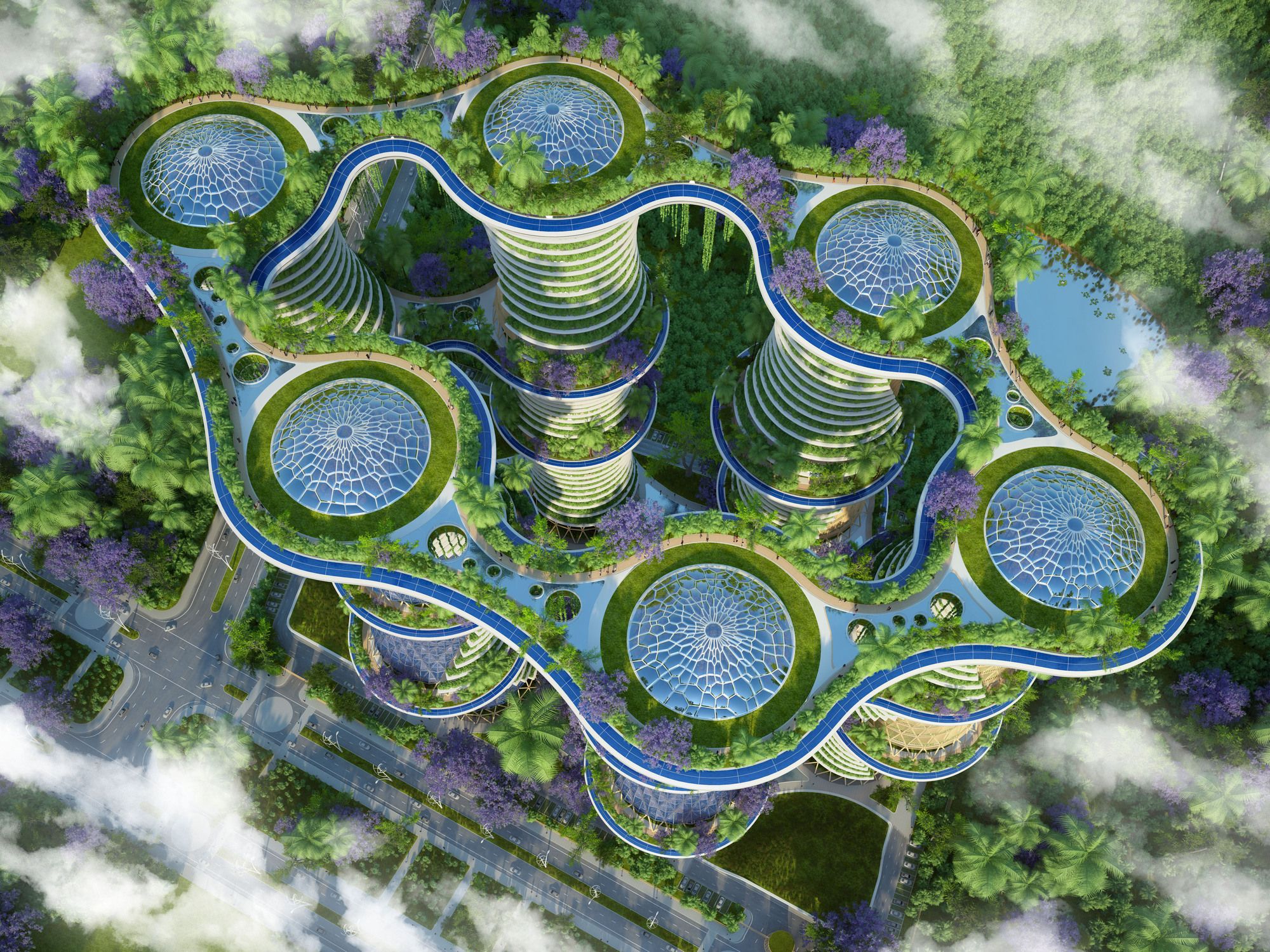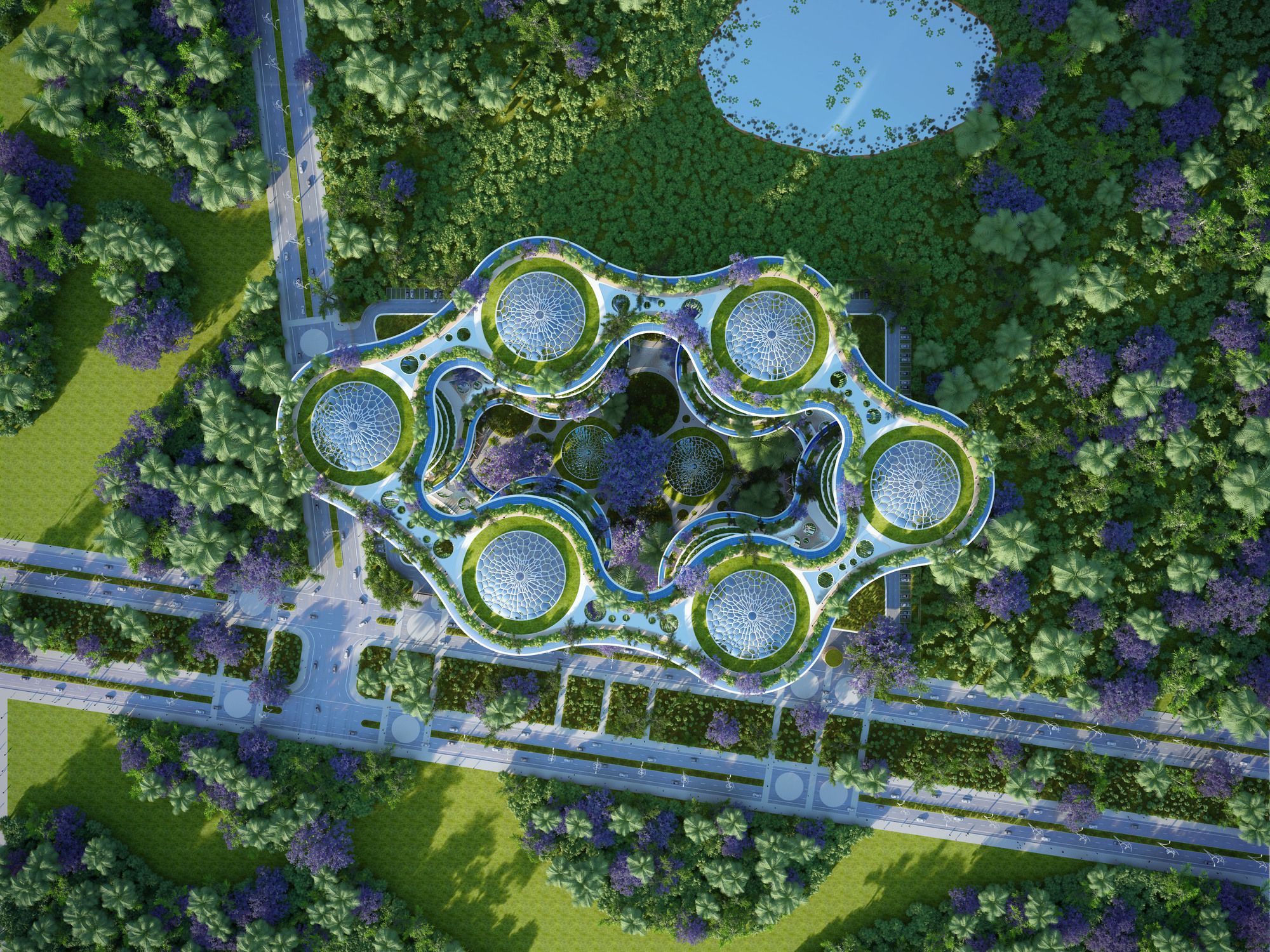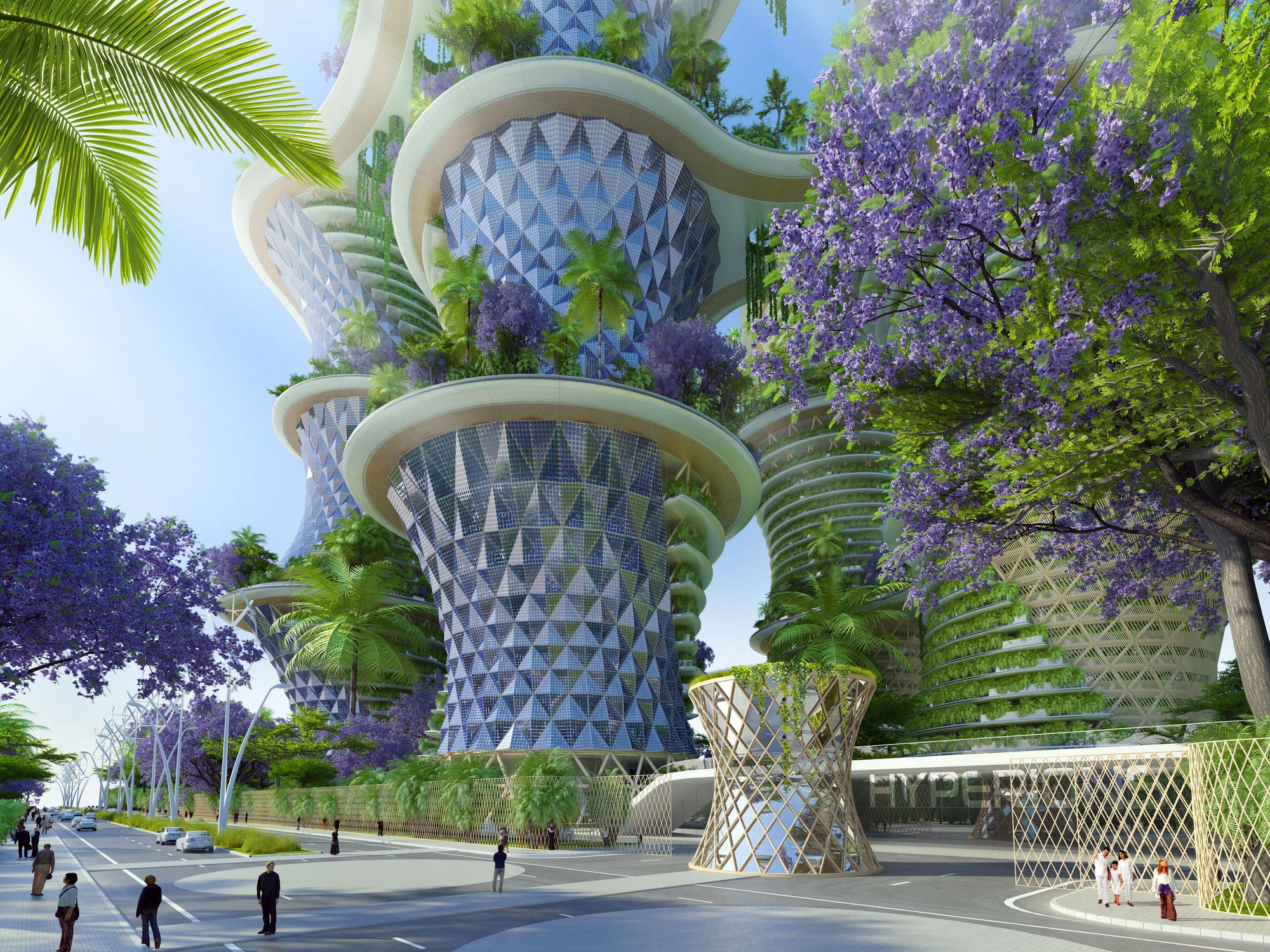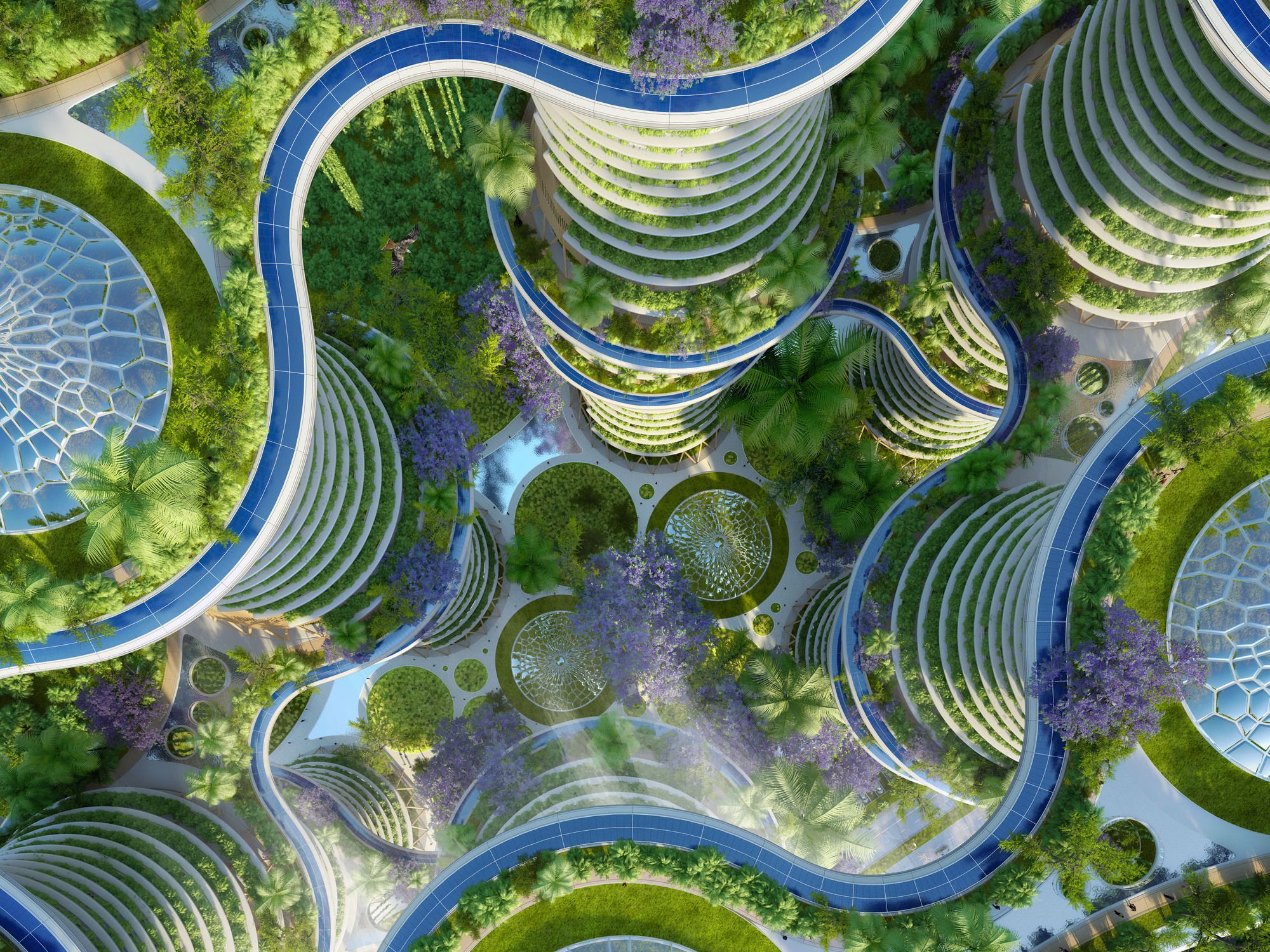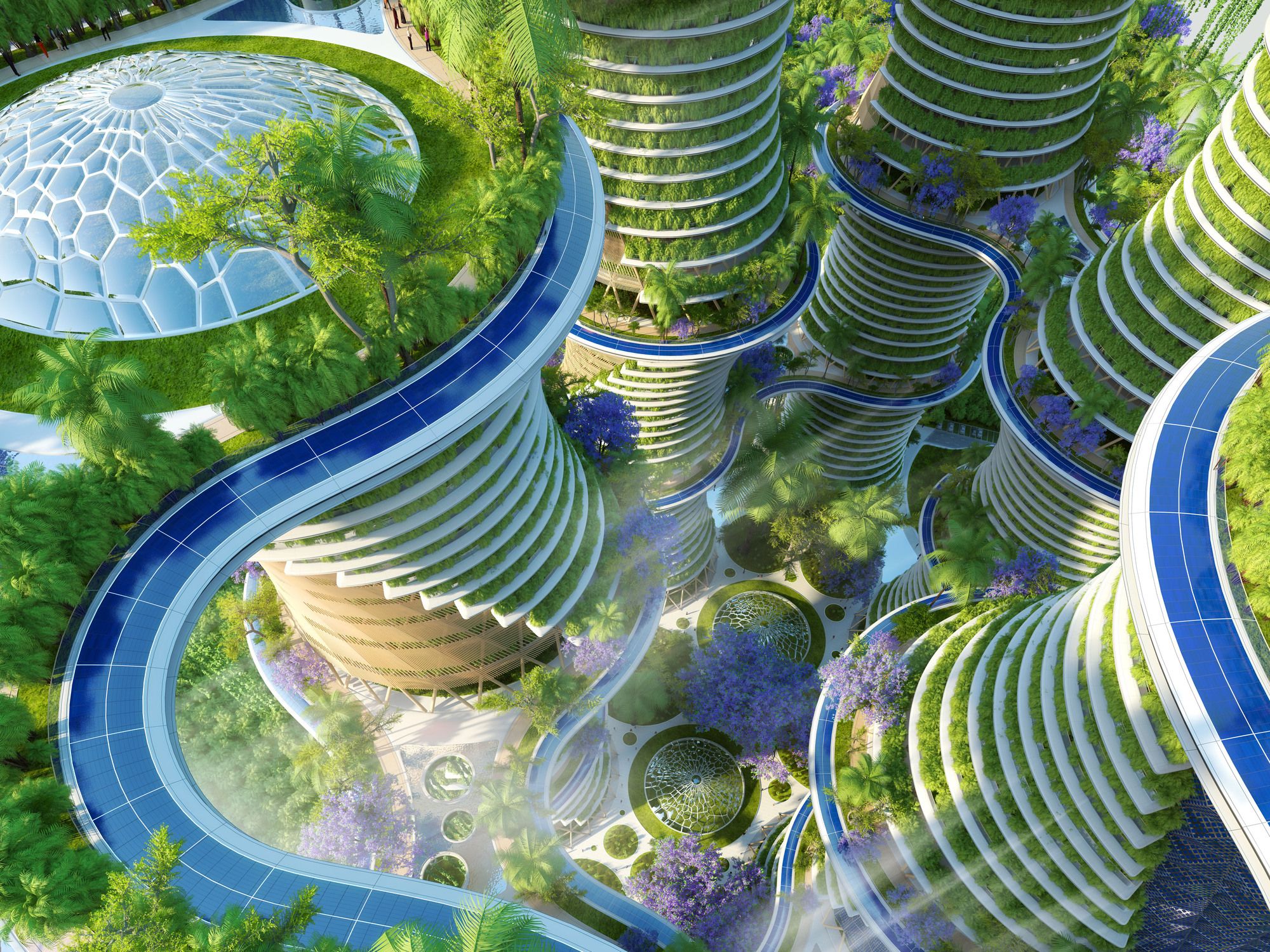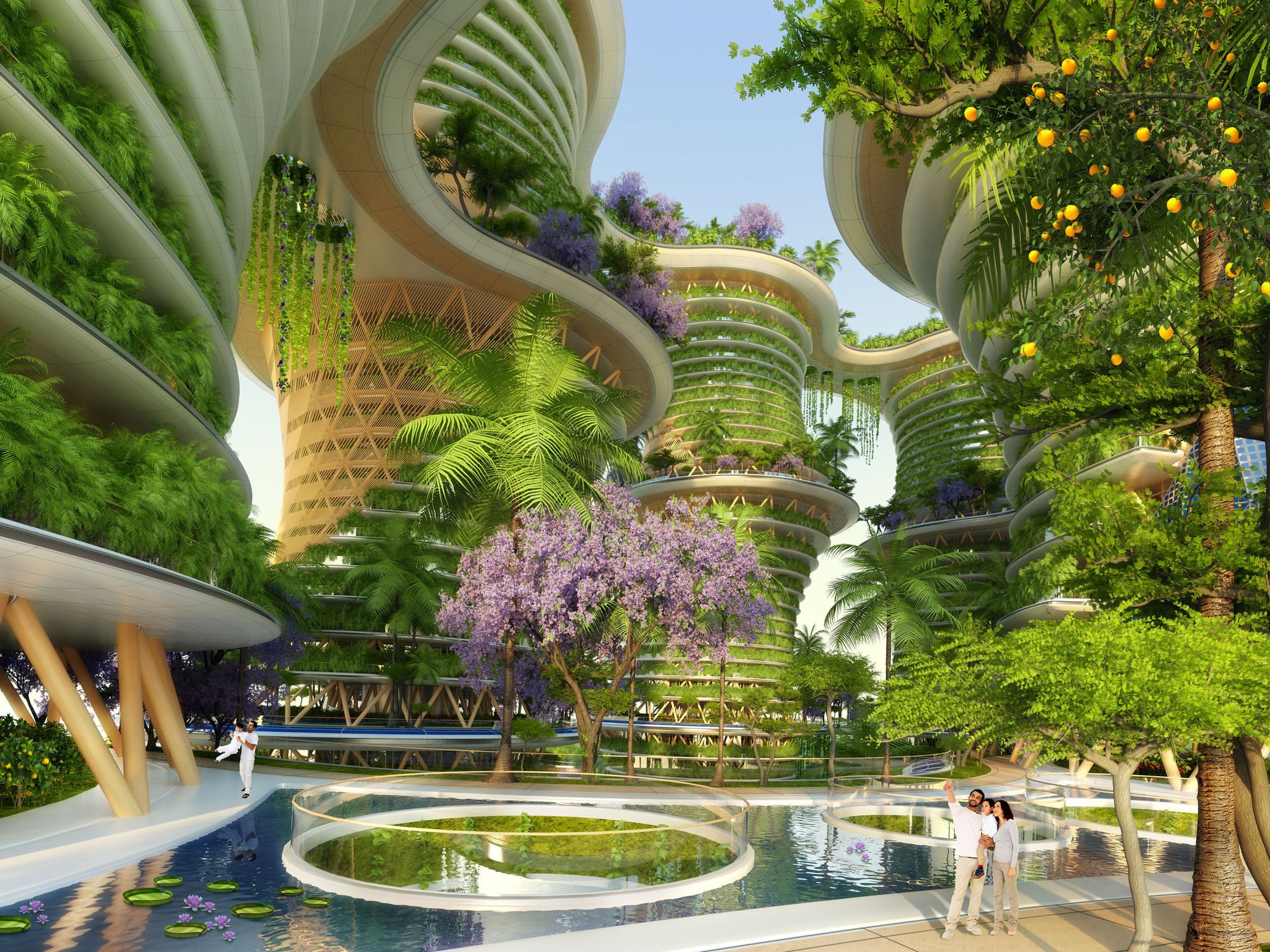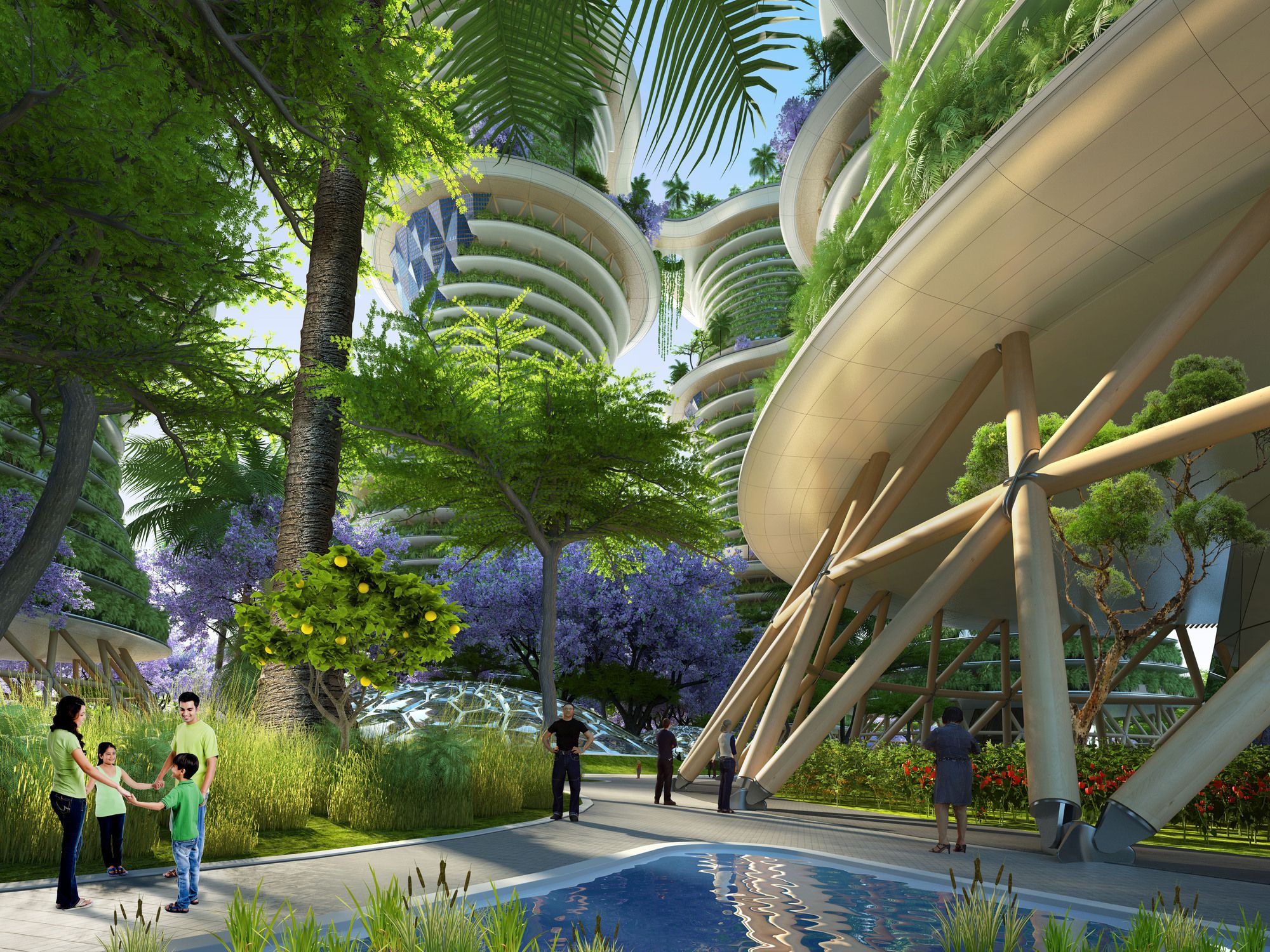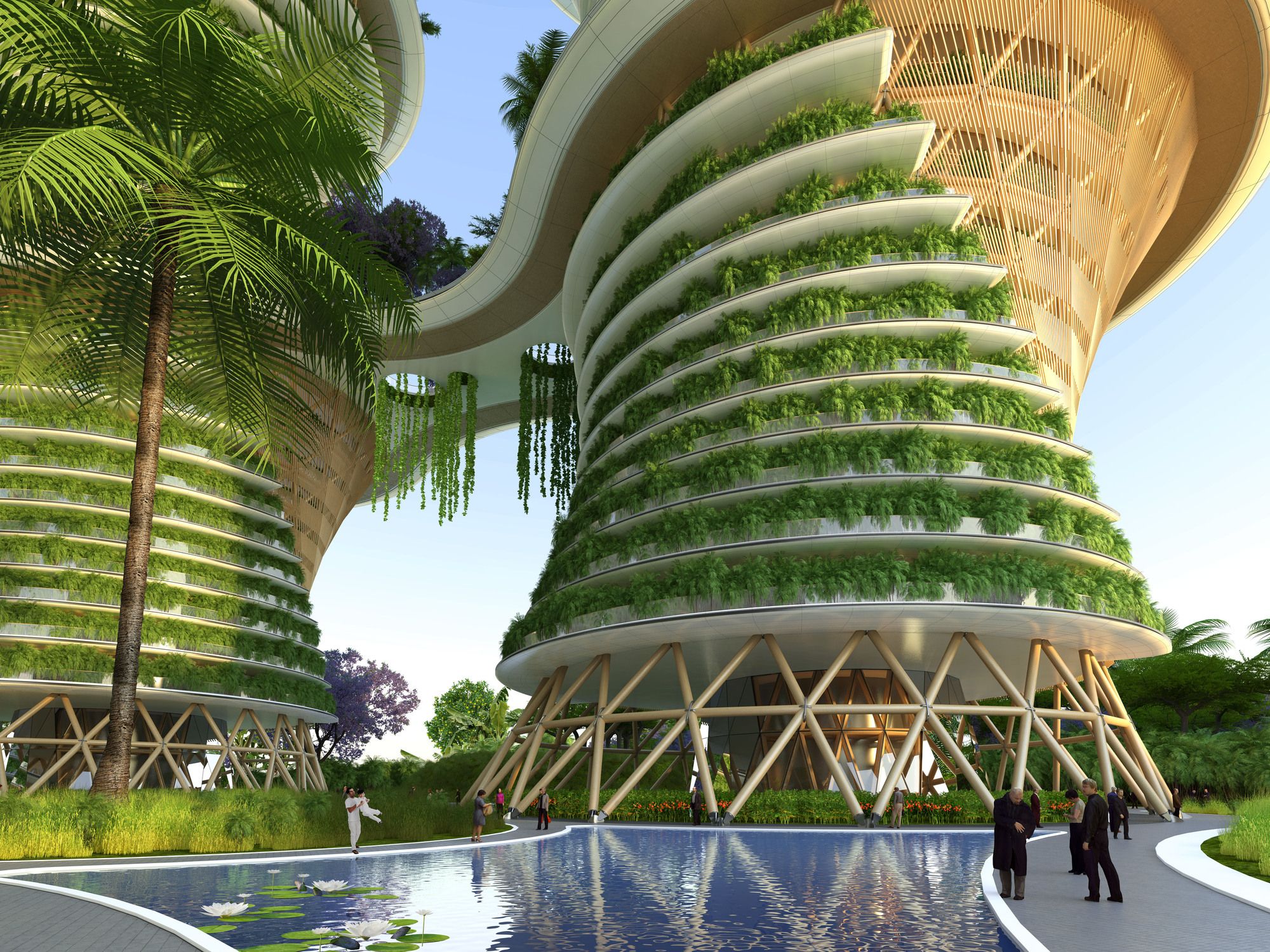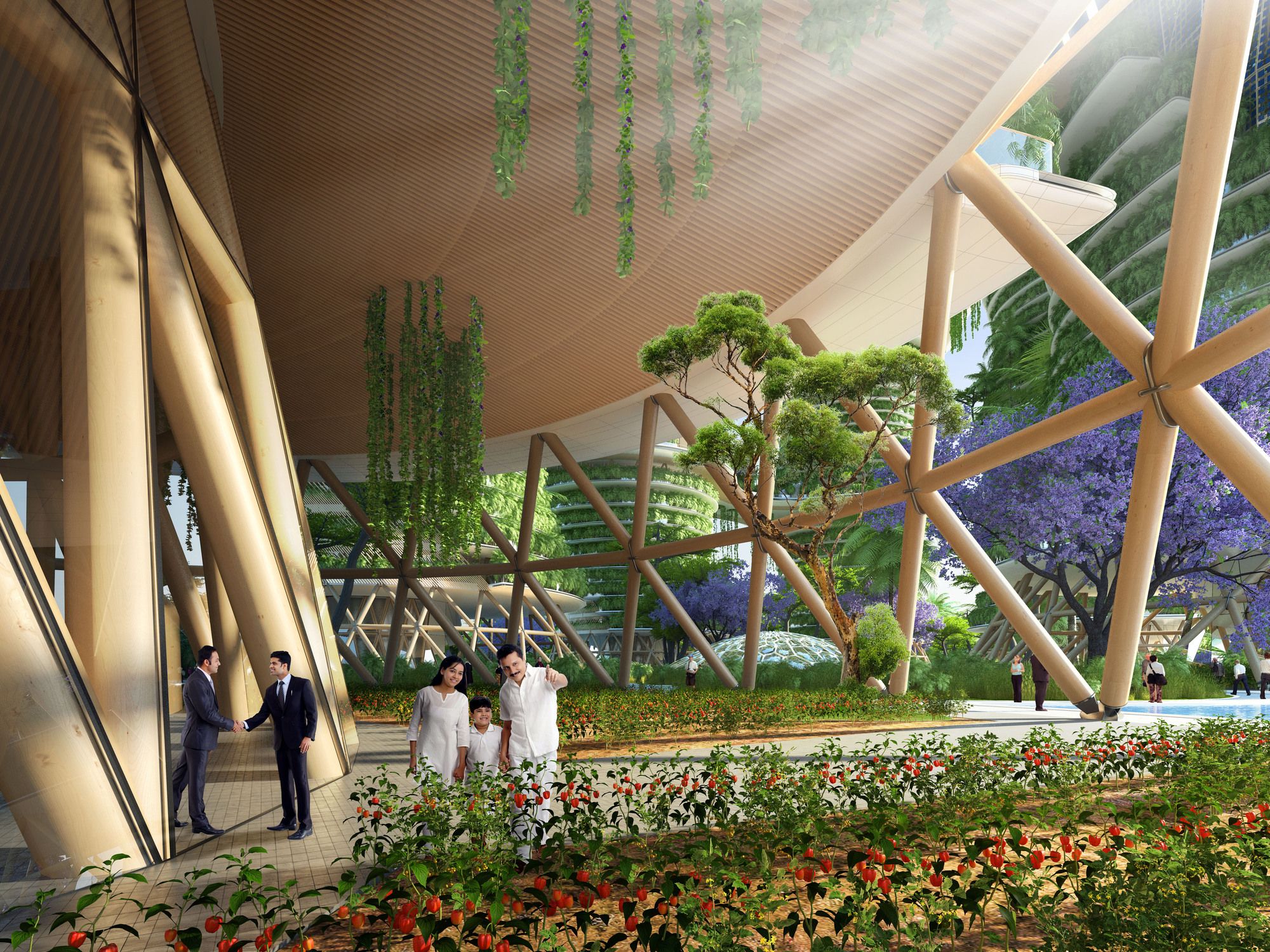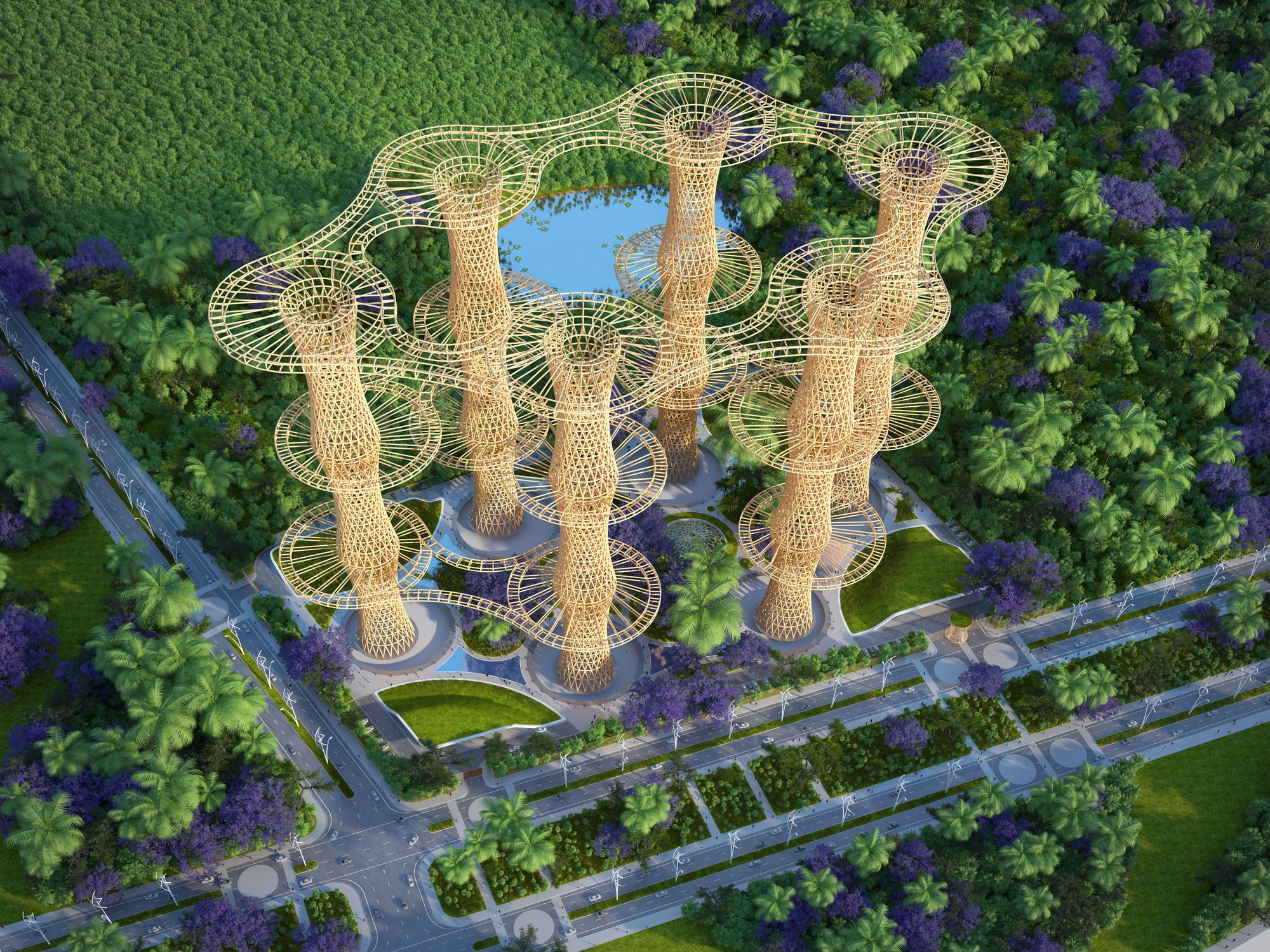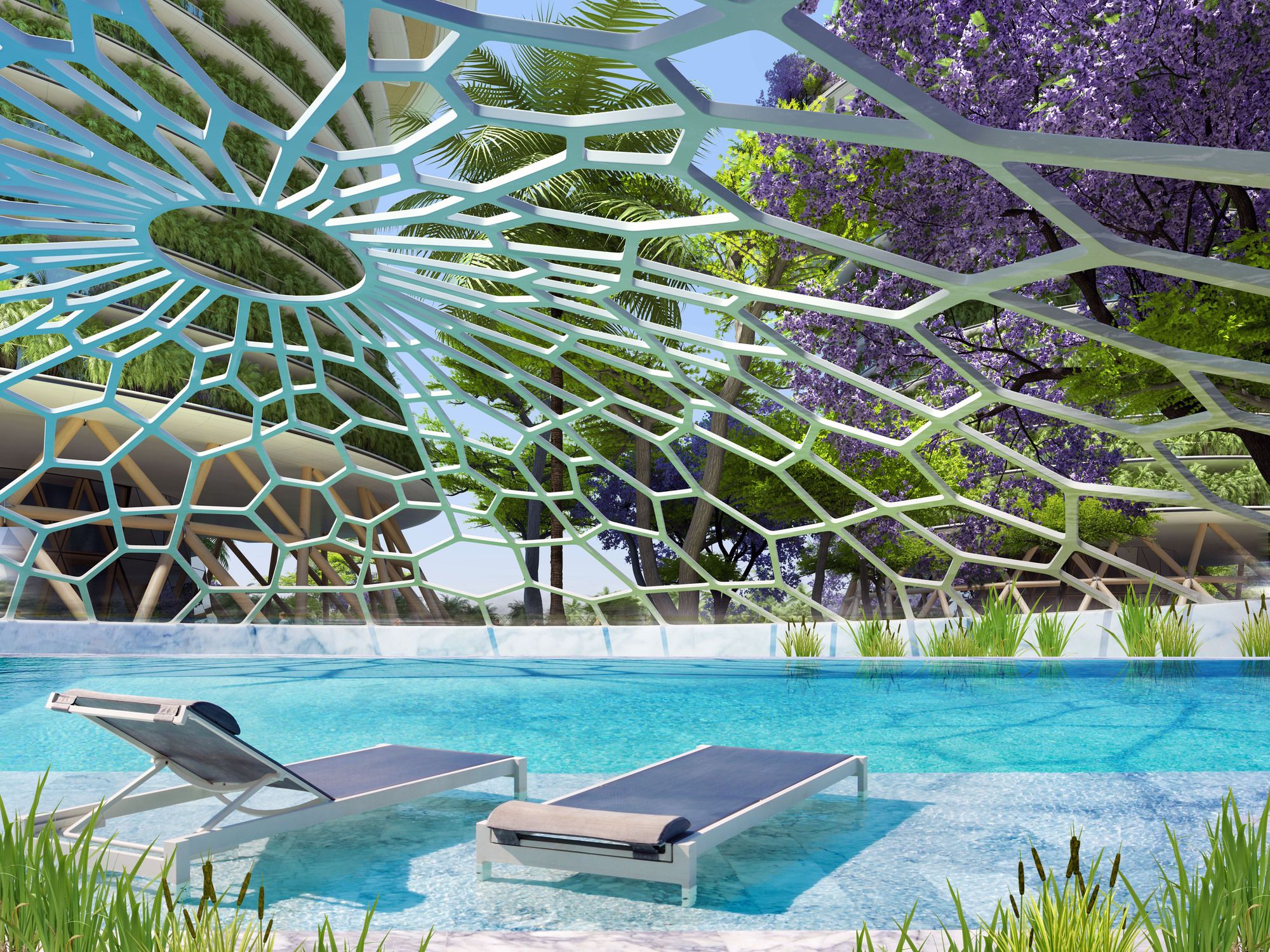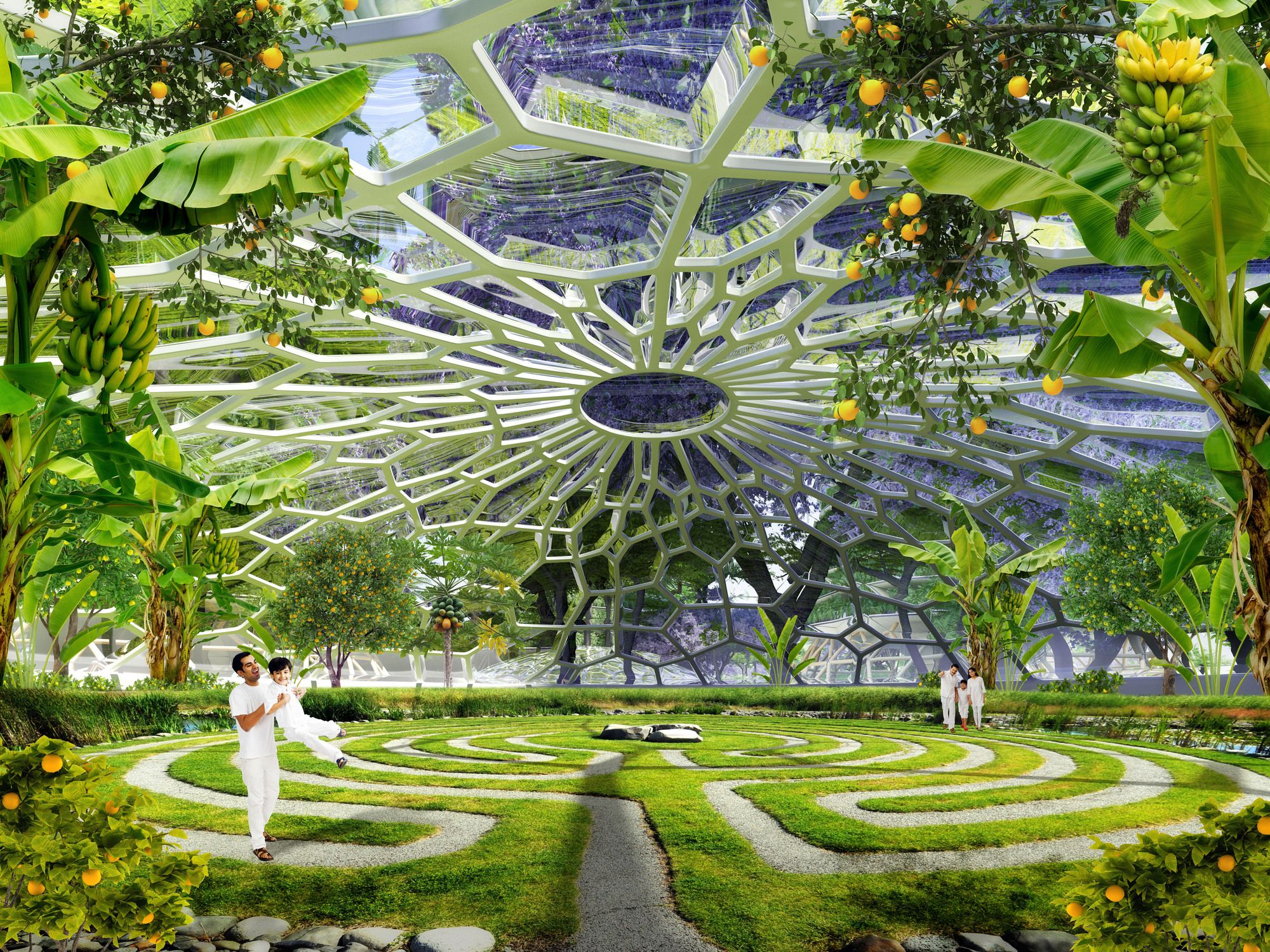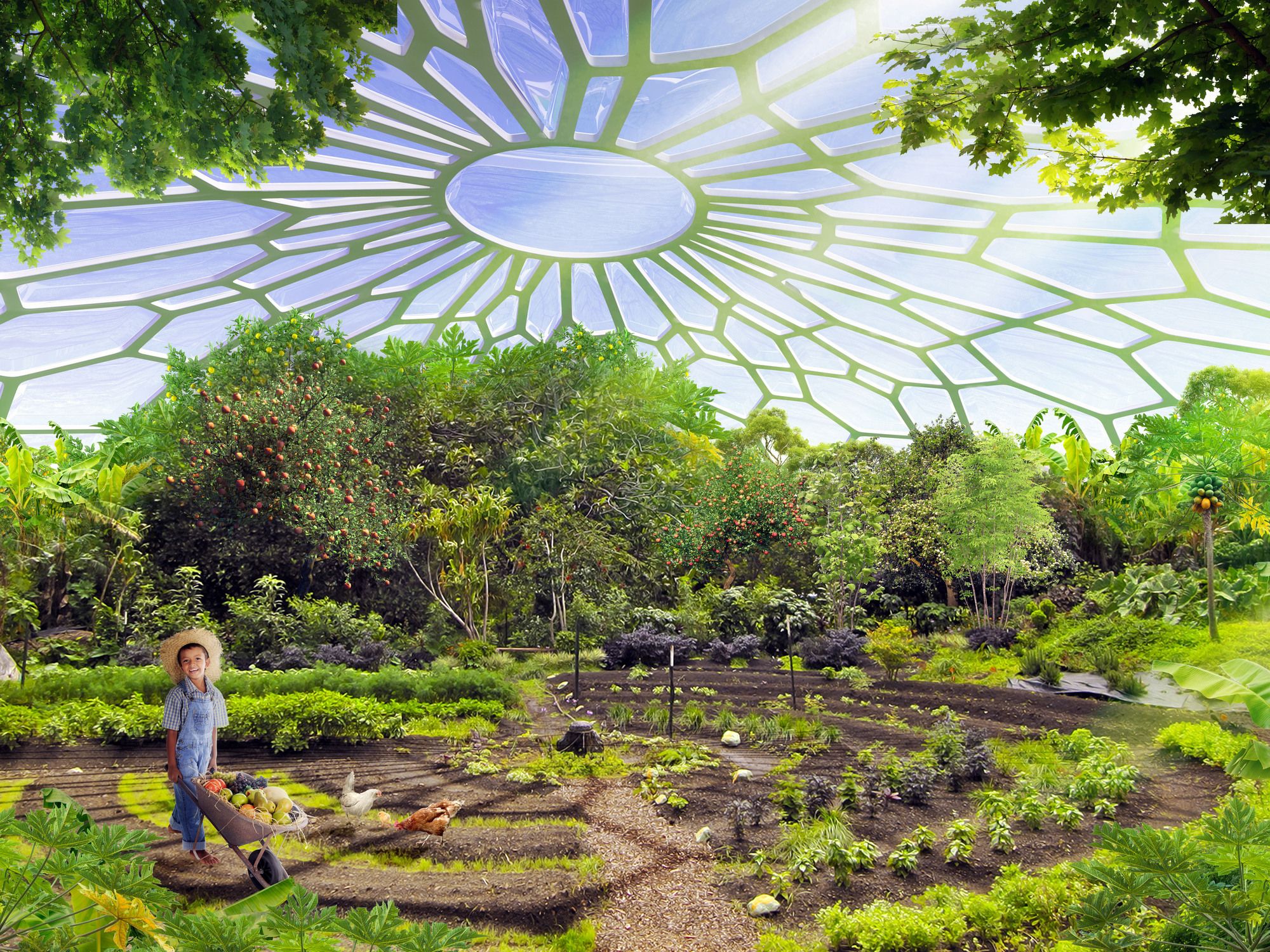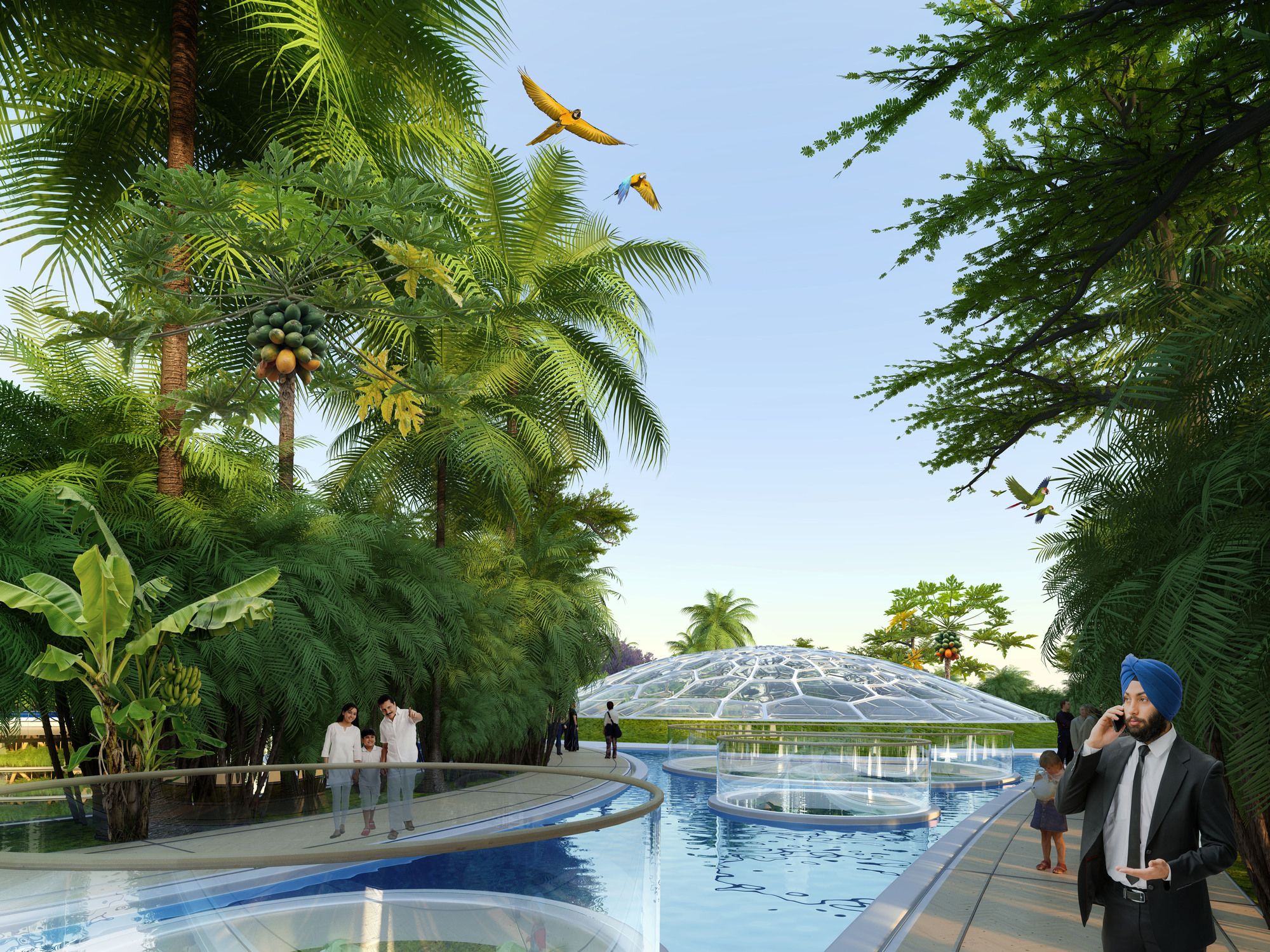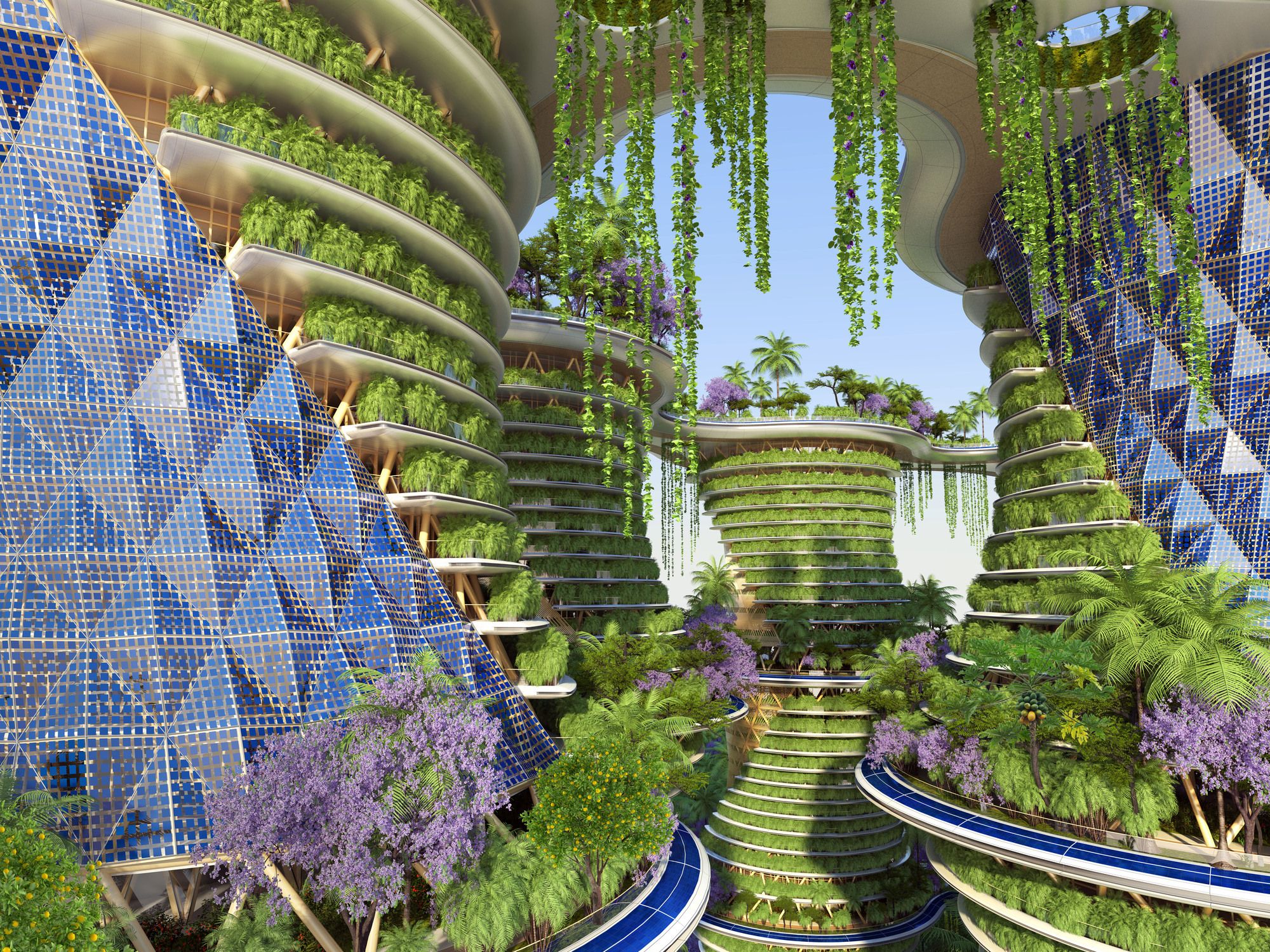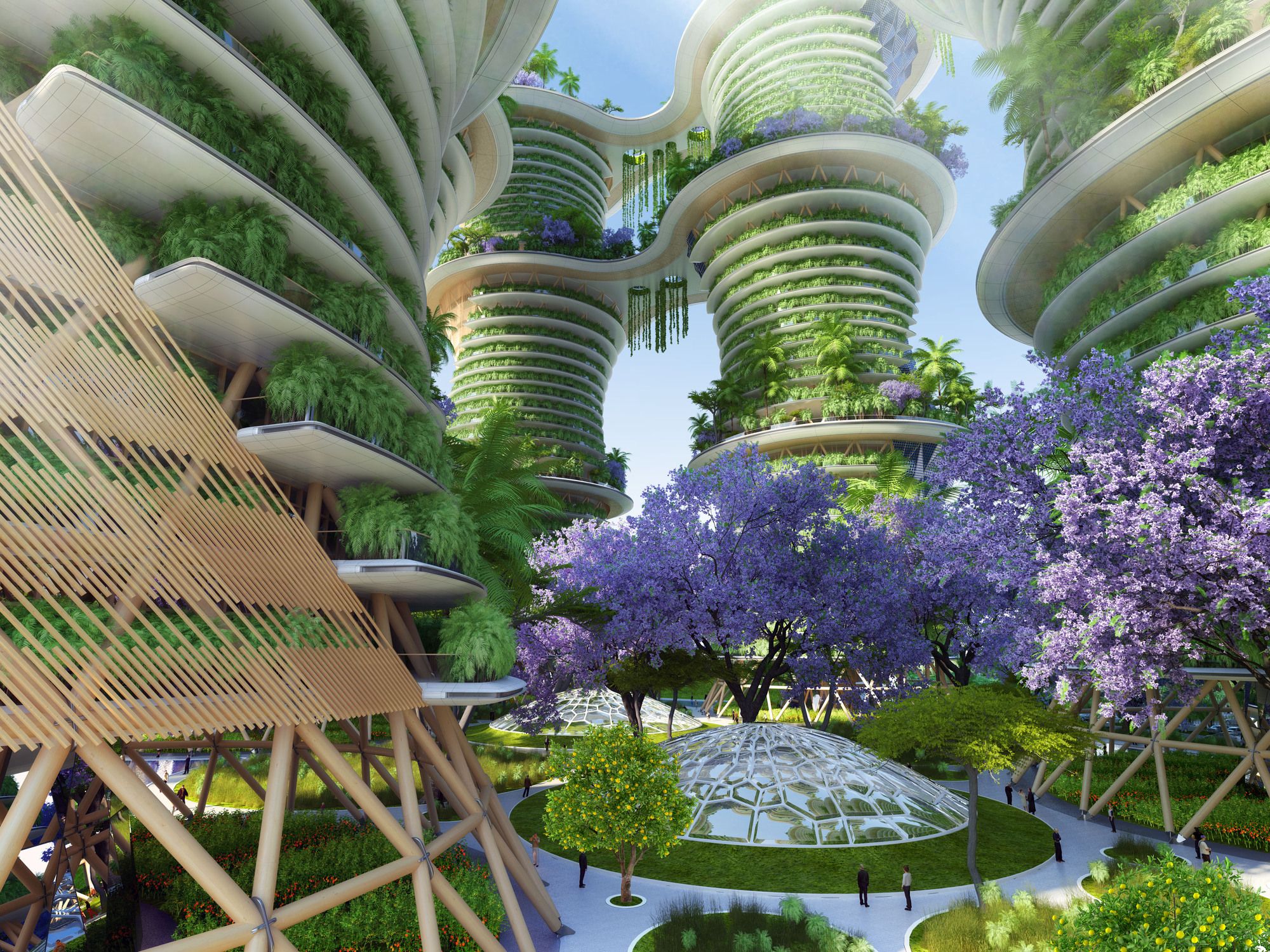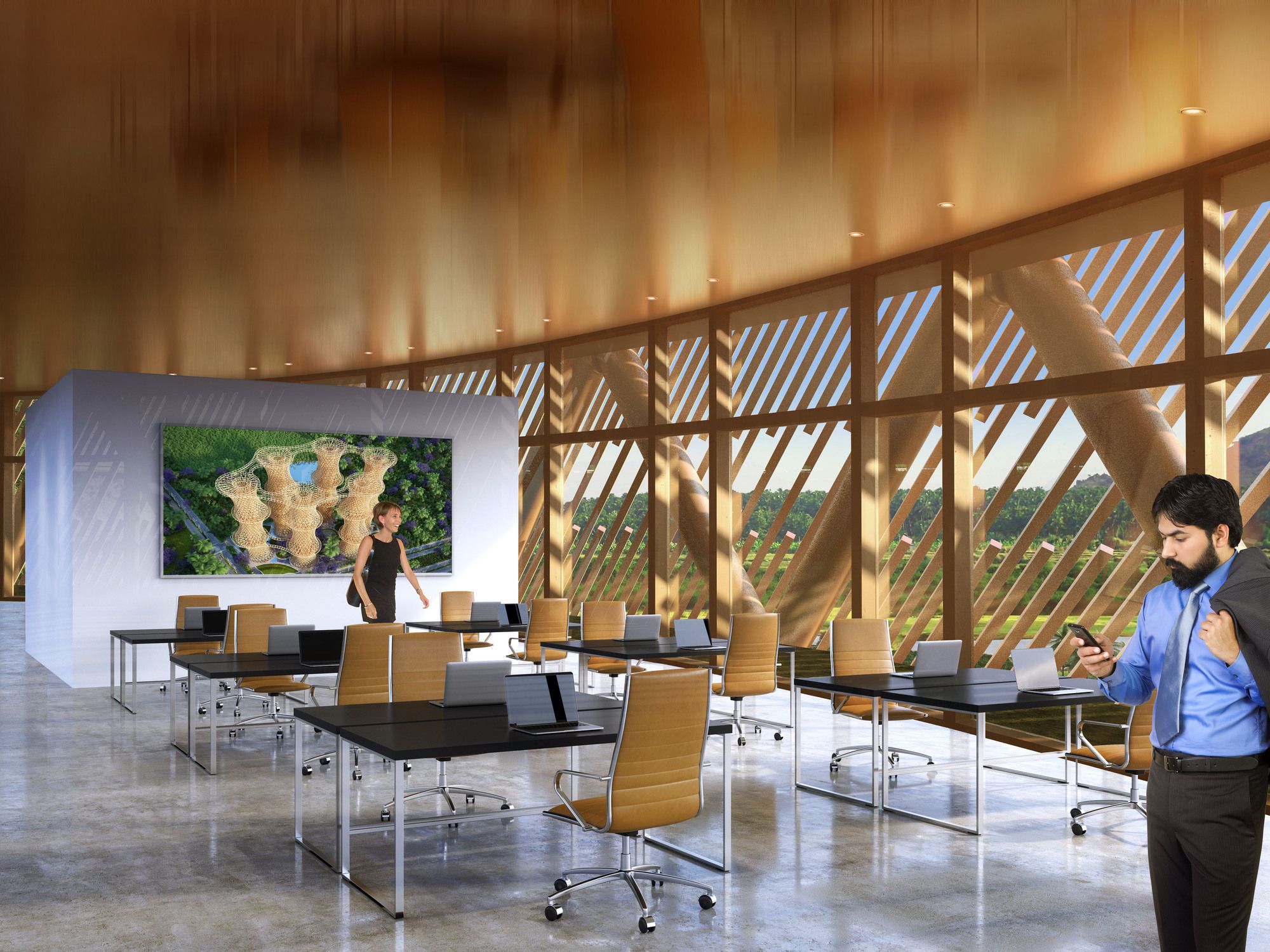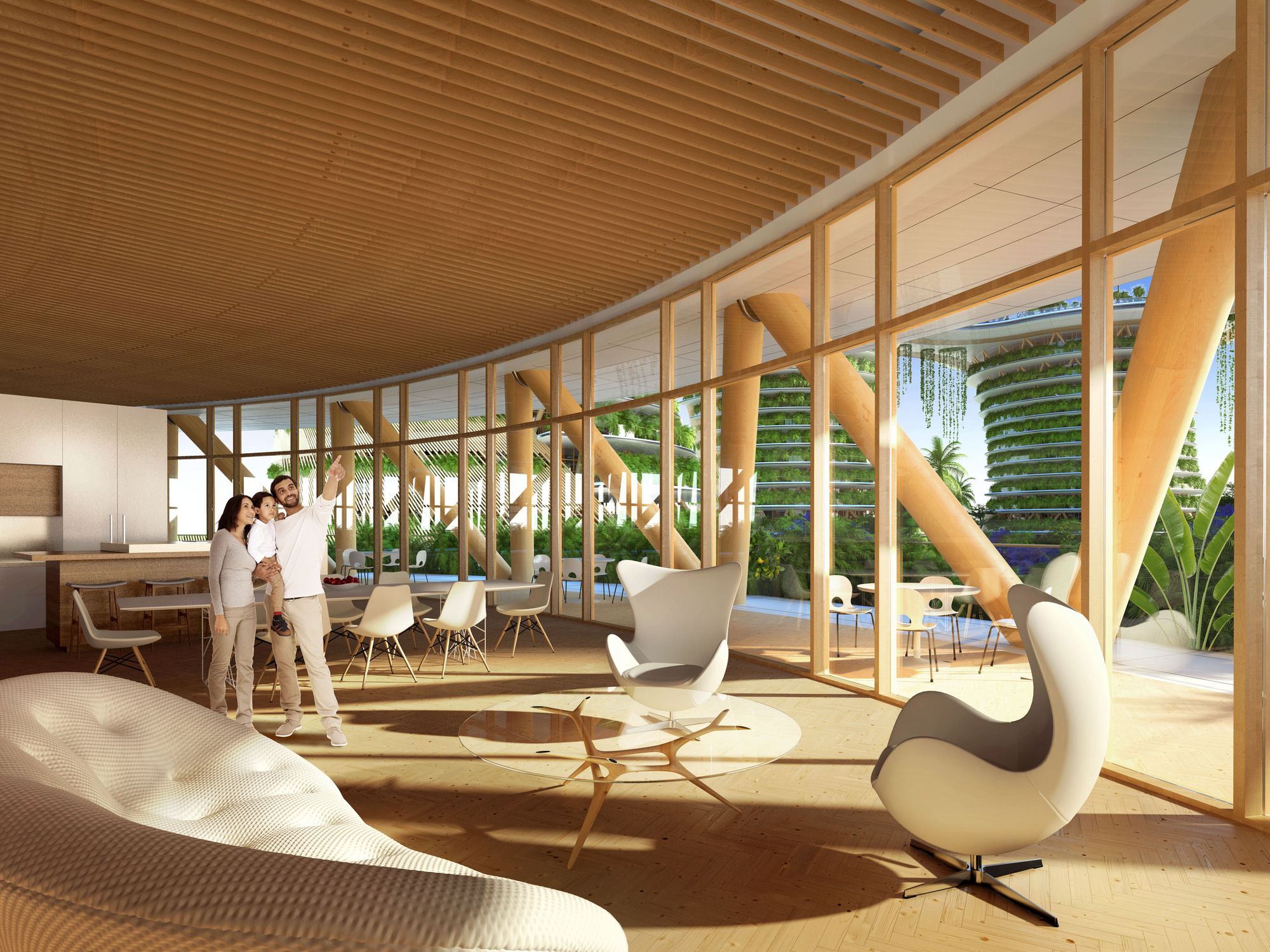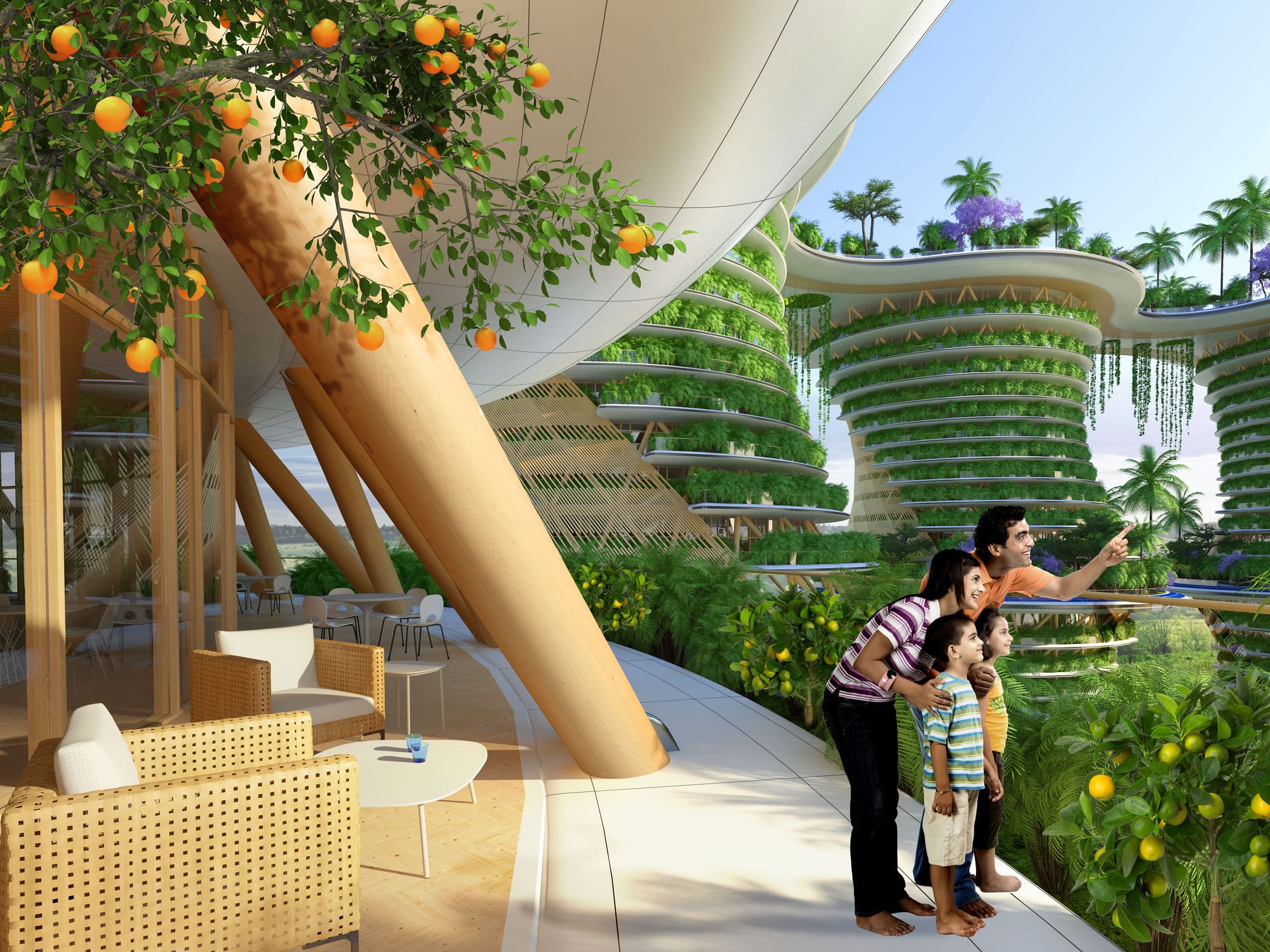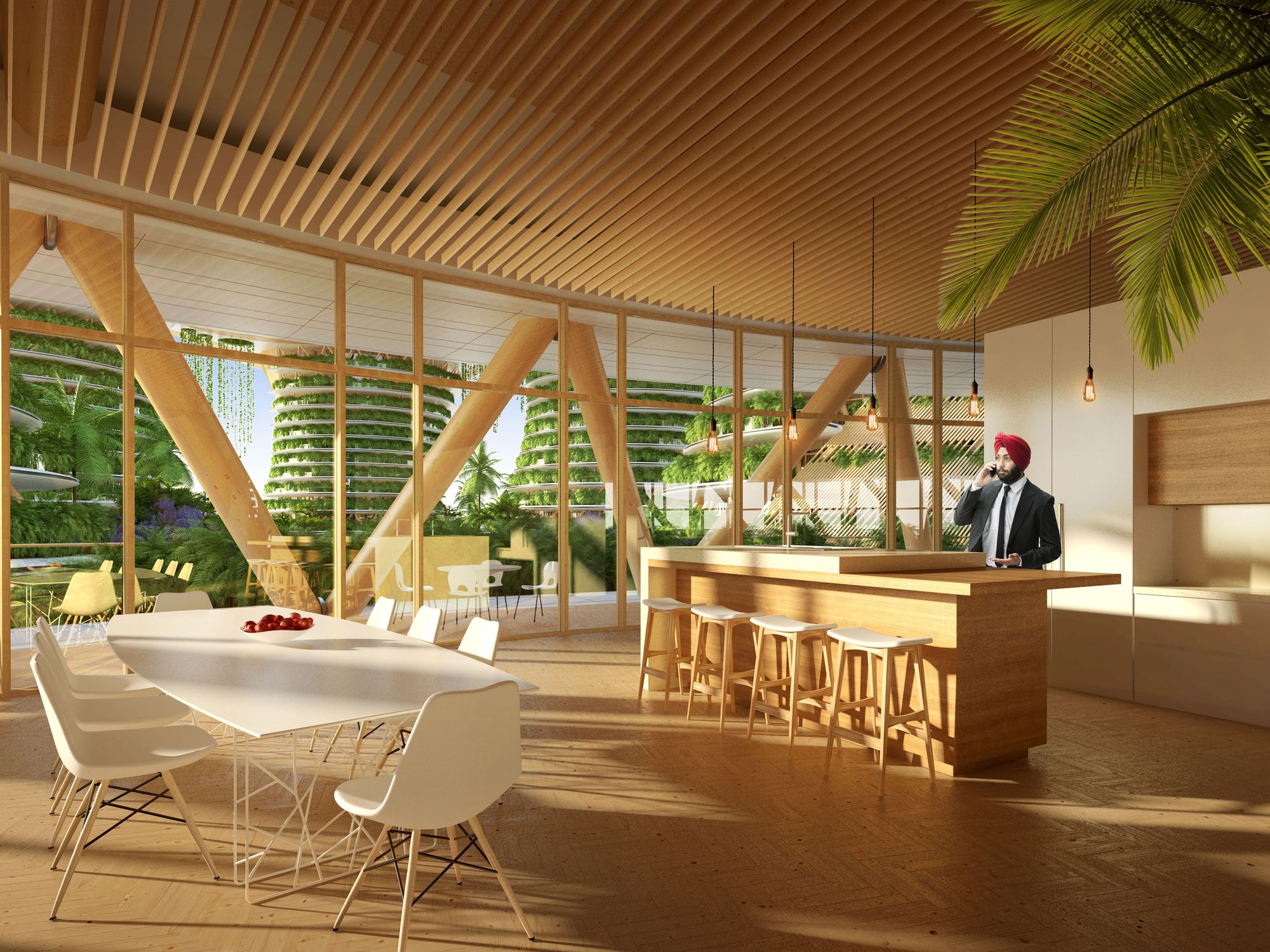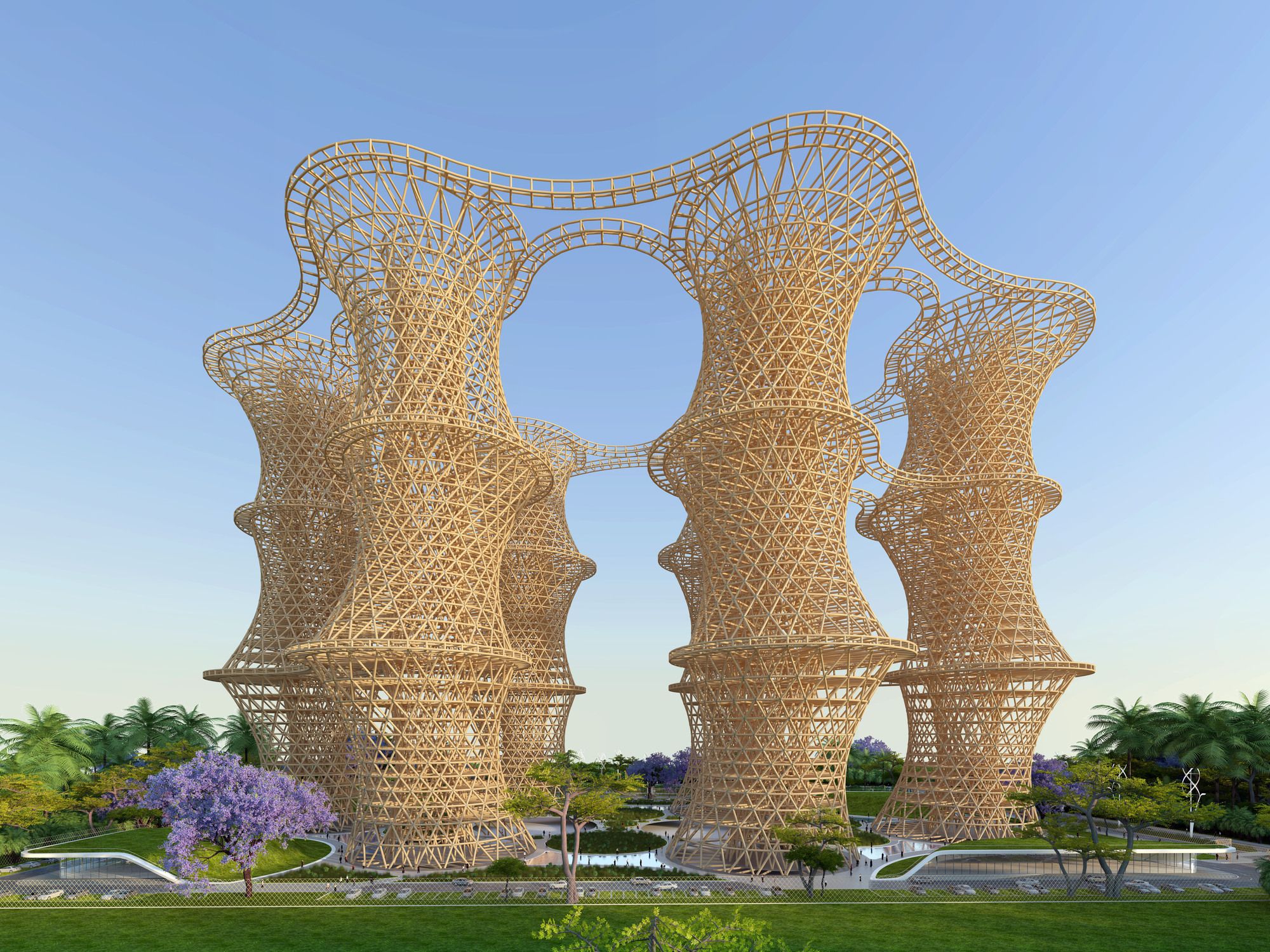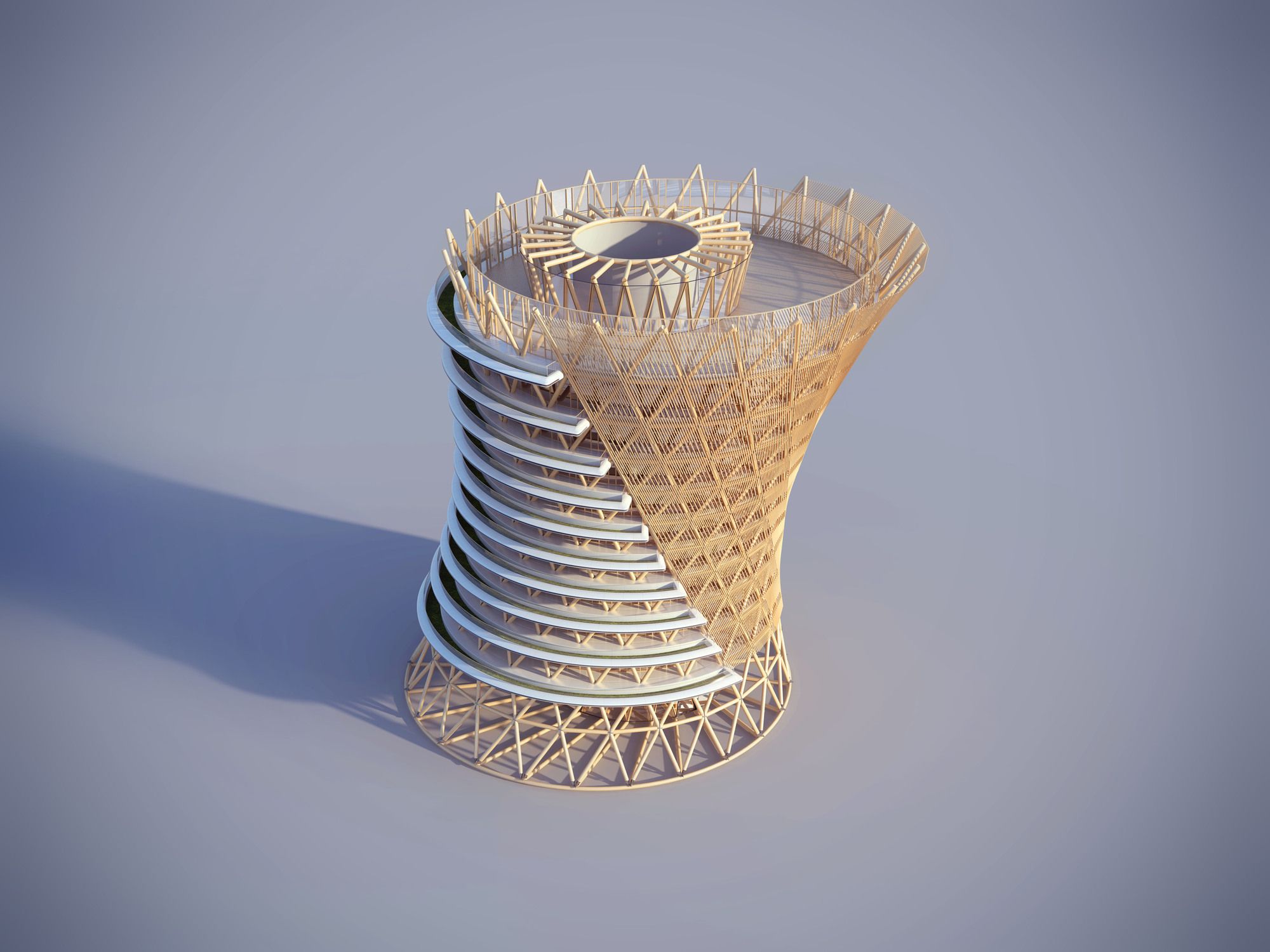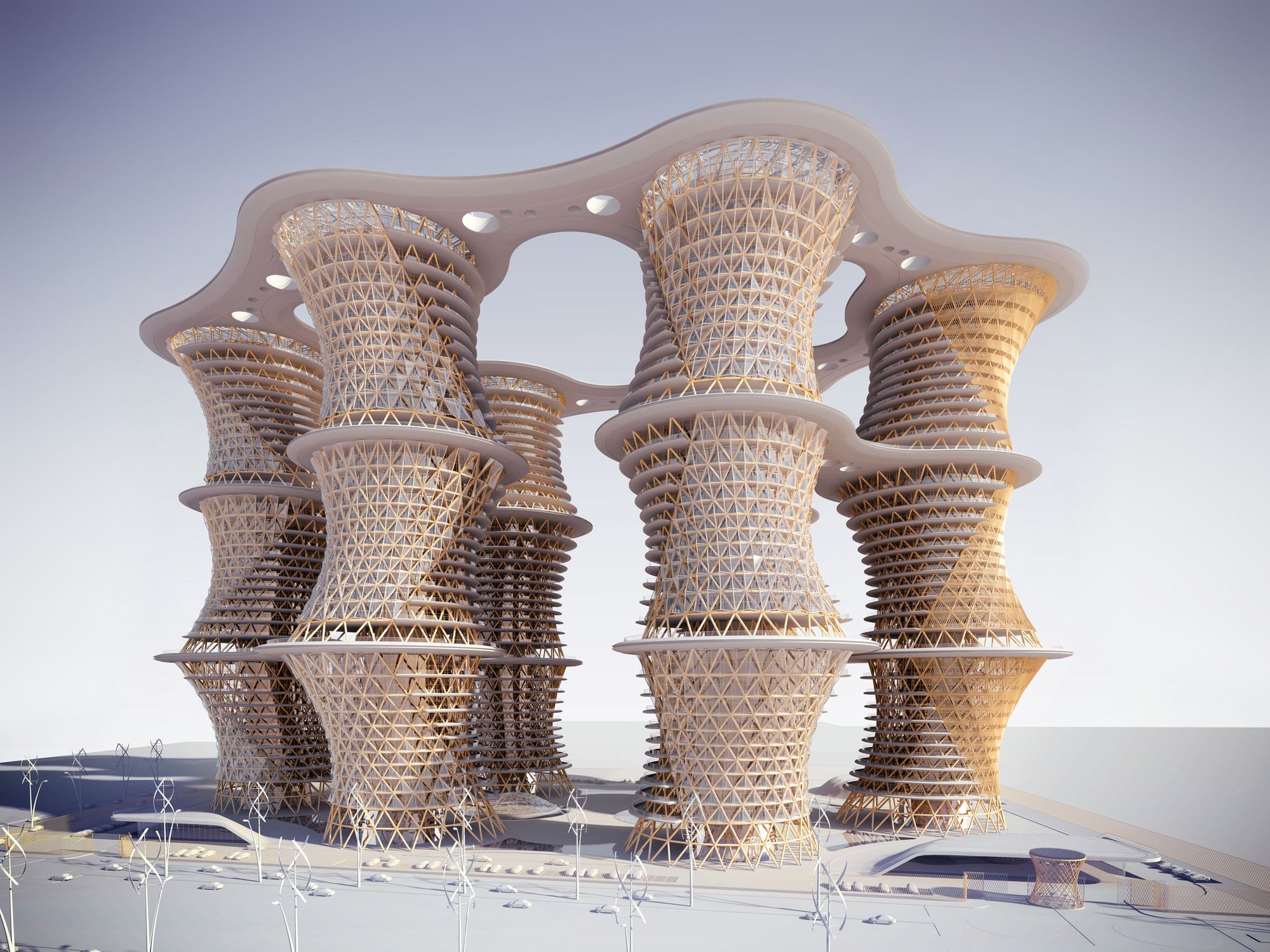Hyperions
project is a complex of six garden towers consists of residential and office spaces in, each 36-storey height. The study based upon the producing food by sustainable system that exists in New Delhi, India. Claimed by its developers, the Vincent Callebaut architectures, the system is able to hold out against climatic change by an active environmental and economic systems.
The name Hyperion comes from a type of Redwood plants that exists in North California with 115.55 meters height, making it the tallest tree on the planet.
‘For the past five years, I’ve lived with my family in the heart of a plus-energy, vertical eco-neighborhood called “hyperions” producing more energy than it consumes. In collaboration with architects, agricultural engineers, agronomists and farmers, I eco-conceived this garden towers project rooted in jaypee greens sports city, with the double objective of energy decentralization and food deindustrialization. my approach is holistic, combining the best of low-tech and high-tech instead of systematically opposing them’, said by the 45 year old agroecologist, Amlankusam, which the project is based upon his visions, paying his respect to the green nature of the country by setting up wooden towers.
The wood necessary for the construction will be provided from Delhi sustainably-managed forest. India has the 2nd place on producing fruits and vegetables and is among ten most wooded countries by having 68 million hectares of forest across 23% of its land. Wood serves as the best material for the sustainable needs on this project by its admirers.
The study is trying to achieve a balance and a connection between the subjects such as green farming, biodiversity, safety of environment and green development. The complex is made in a way to stimulate a vertical village which is a mixture of social and cultural systems by creating the offices, business, multi-use and other spaces behind solar facades of the six garden towers.
Also, the furniture provided by local cabinetmakers and recycling shops and built from natural materials such as tamarind and sandalwood. All of the residential parts of the complex are accessed to hanging hydroponic balconies.
Based on aquaponics, the ecosystem developed on the towers will be working on a way which plantation process begins to grow around wooden structured towers in order to create food autonomy while saving the land for the residents. On each apartment’s balcony clay balls will be placed to become the light substrate for the vegetables such as carrots, tomatoes, spinach, saffron and coriander. The project will also use the hydroelectric energy storage plants (PHES), which will save up to 90 percent of water need due to its closed loop circulation.
By: Shahin Shirvani
Courtesy of Vincent Callebaut Architectures
Courtesy of Vincent Callebaut Architectures
Courtesy of Vincent Callebaut Architectures
Courtesy of Vincent Callebaut Architectures
Courtesy of Vincent Callebaut Architectures
Courtesy of Vincent Callebaut Architectures
Courtesy of Vincent Callebaut Architectures
Courtesy of Vincent Callebaut Architectures
Courtesy of Vincent Callebaut Architectures
Courtesy of Vincent Callebaut Architectures
Courtesy of Vincent Callebaut Architectures
Courtesy of Vincent Callebaut Architectures
Courtesy of Vincent Callebaut Architectures
Courtesy of Vincent Callebaut Architectures
Courtesy of Vincent Callebaut Architectures
Courtesy of Vincent Callebaut Architectures
Courtesy of Vincent Callebaut Architectures
Courtesy of Vincent Callebaut Architectures
Courtesy of Vincent Callebaut Architectures
Courtesy of Vincent Callebaut Architectures
Courtesy of Vincent Callebaut Architectures
Courtesy of Vincent Callebaut Architectures
Courtesy of Vincent Callebaut Architectures
Courtesy of Vincent Callebaut Architectures
Courtesy of Vincent Callebaut Architectures
Courtesy of Vincent Callebaut Architectures
Courtesy of Vincent Callebaut Architectures
Courtesy of Vincent Callebaut Architectures
Courtesy of Vincent Callebaut Architectures


